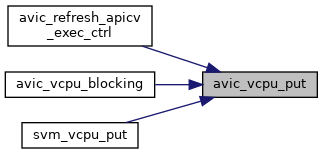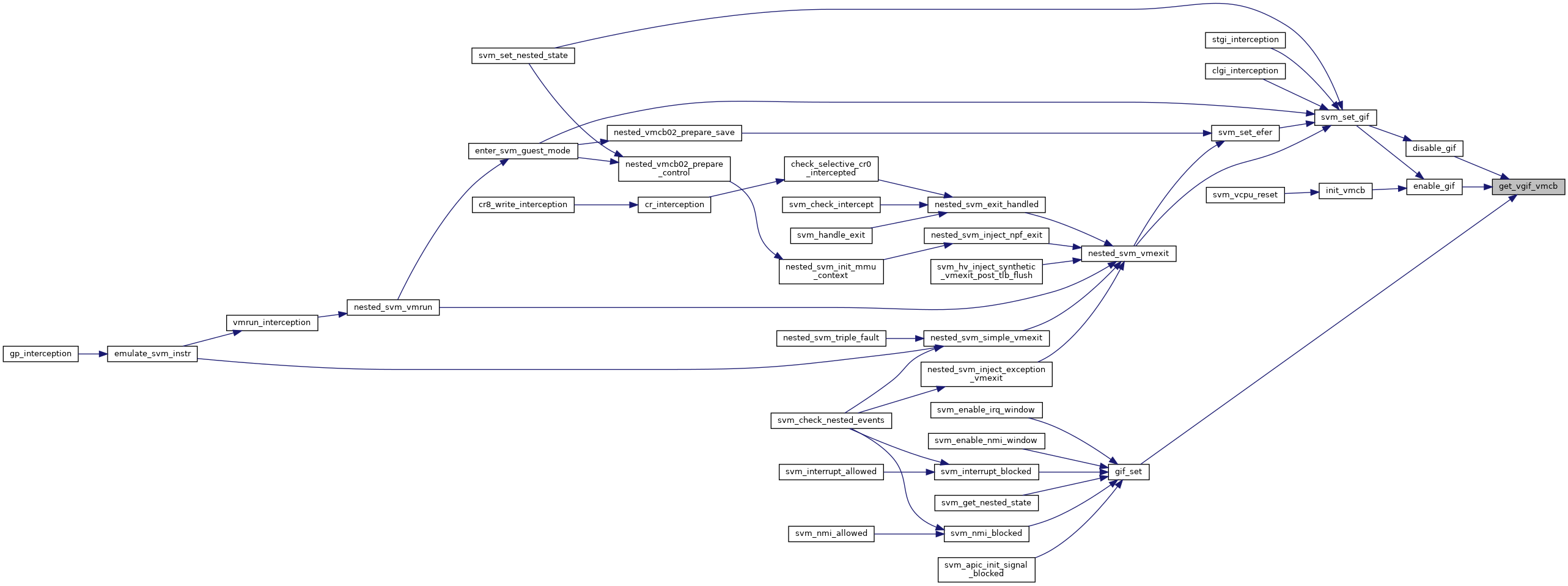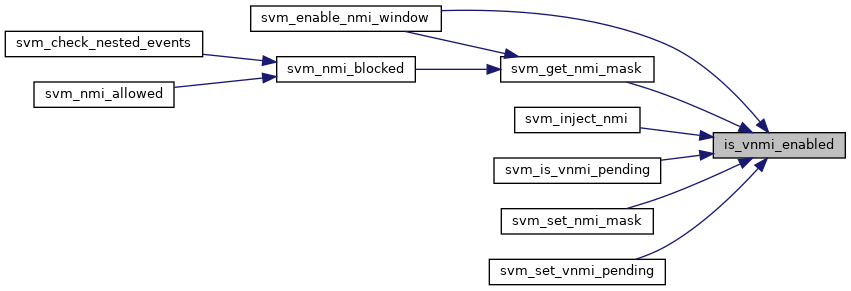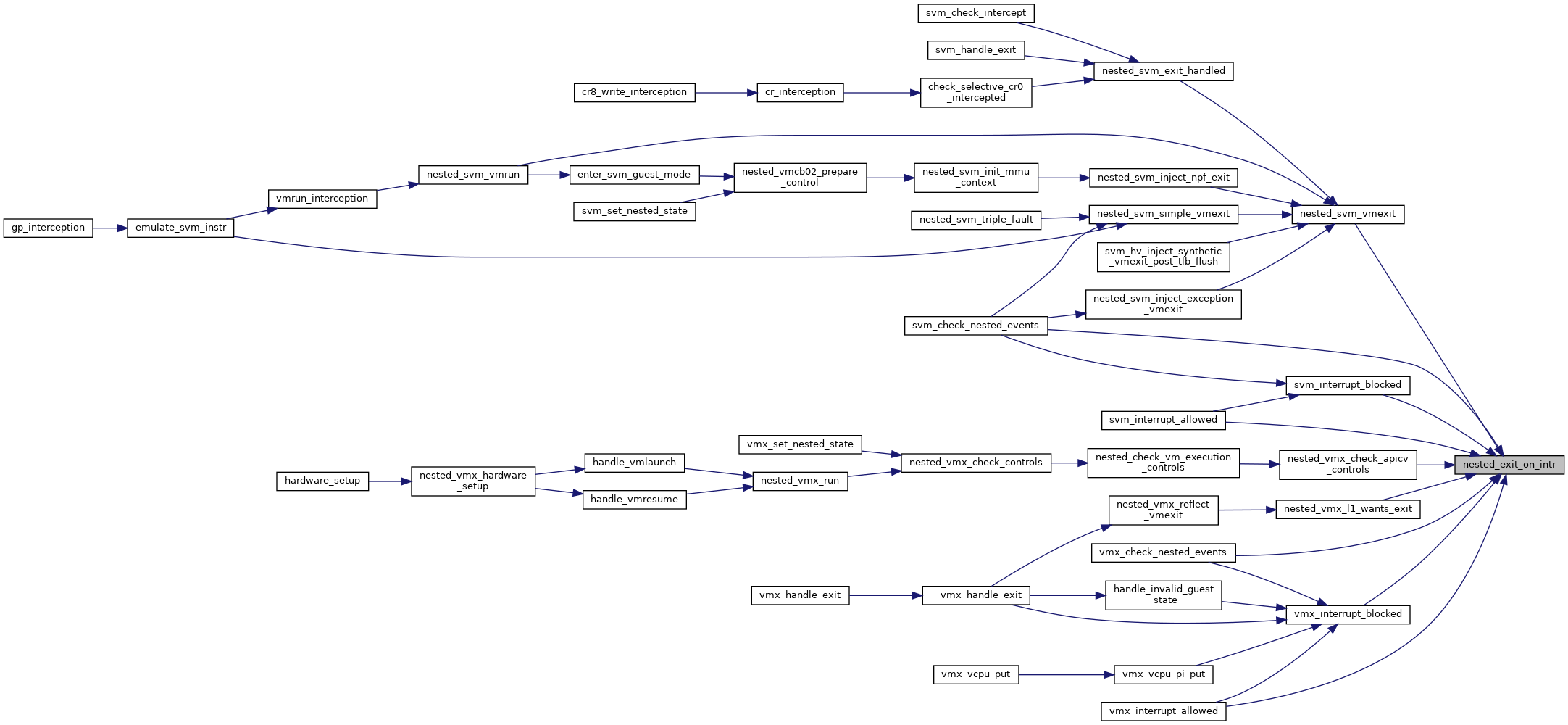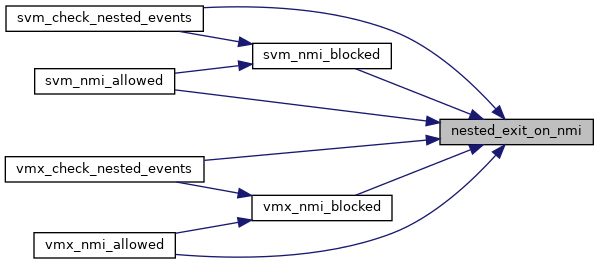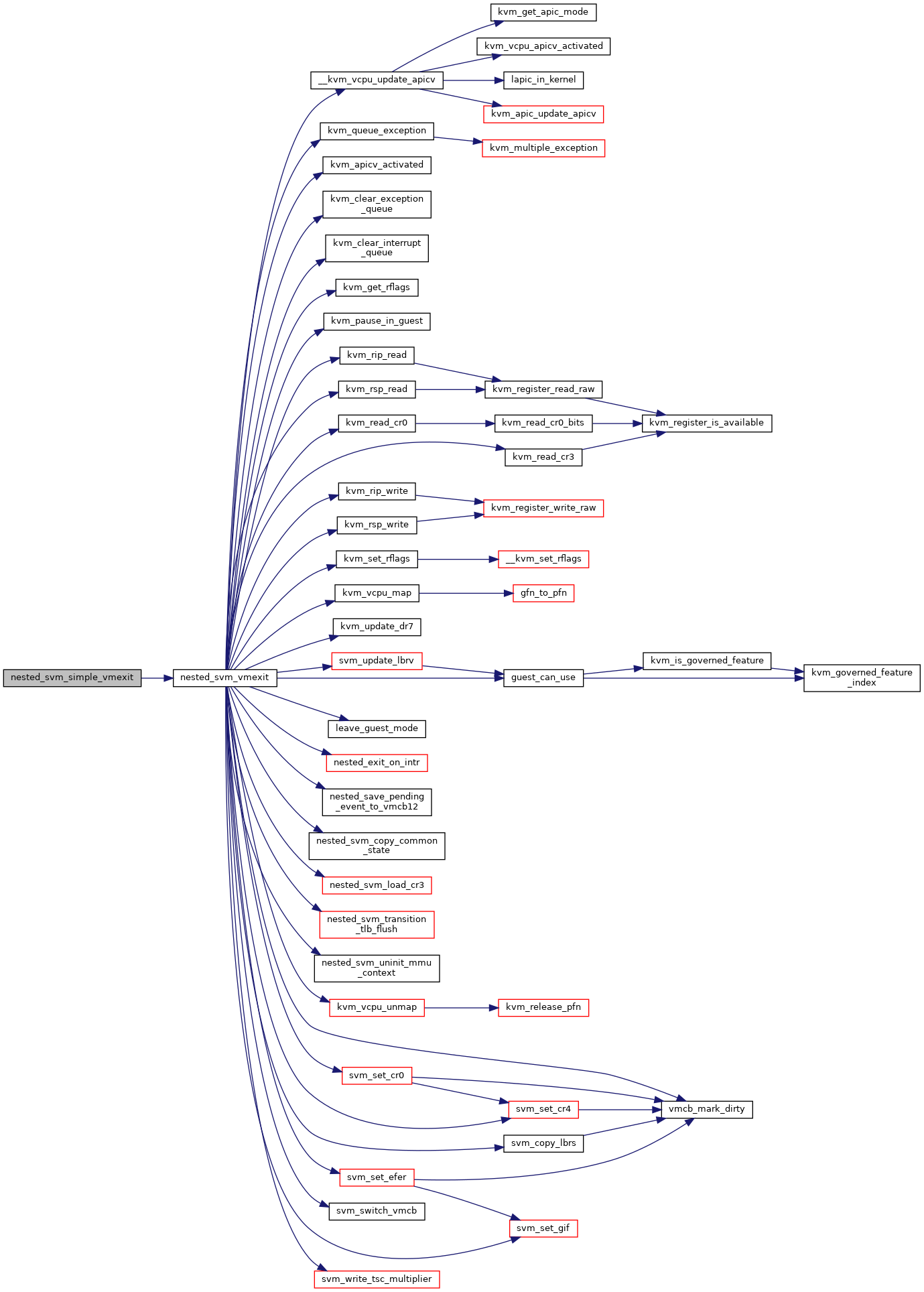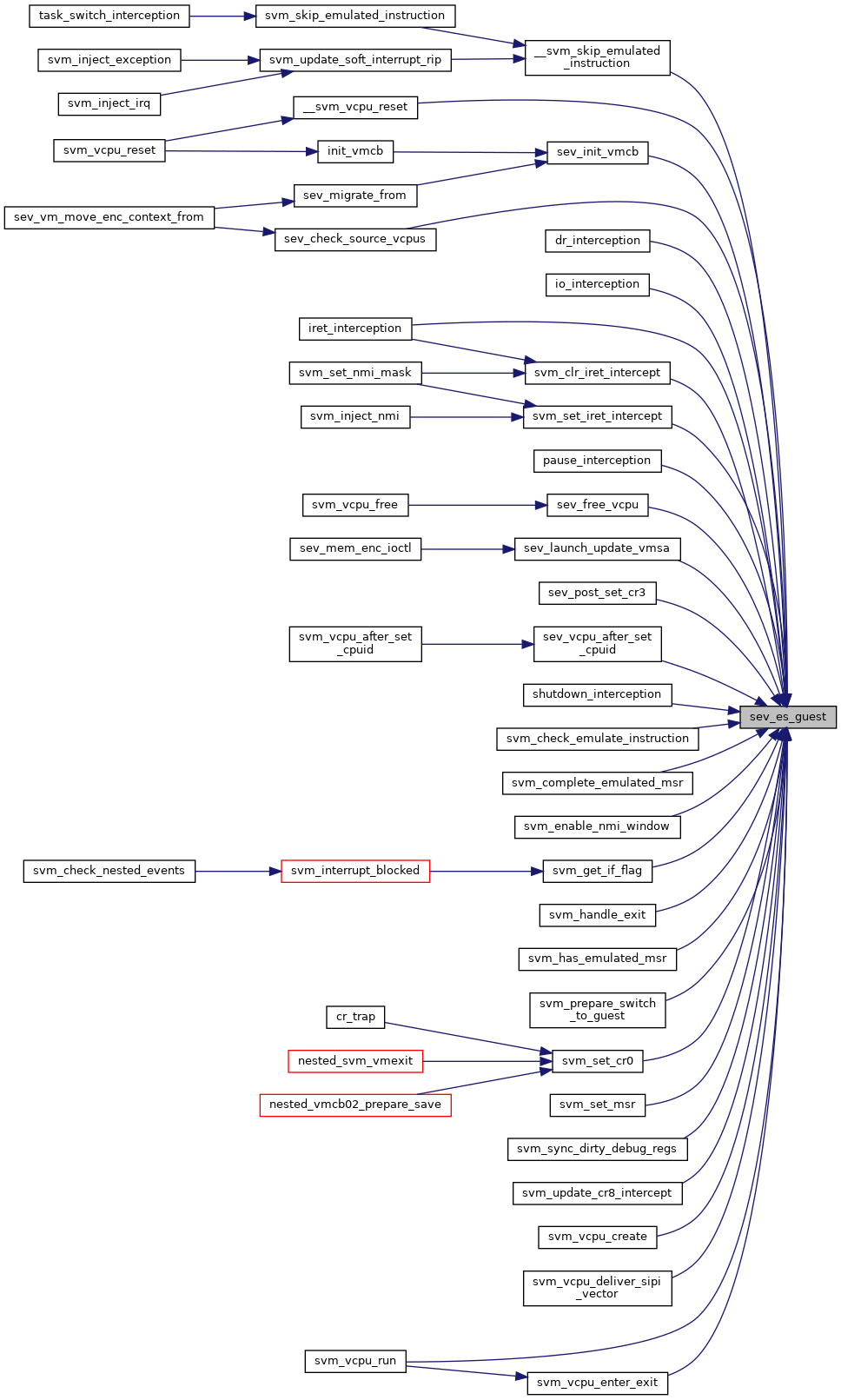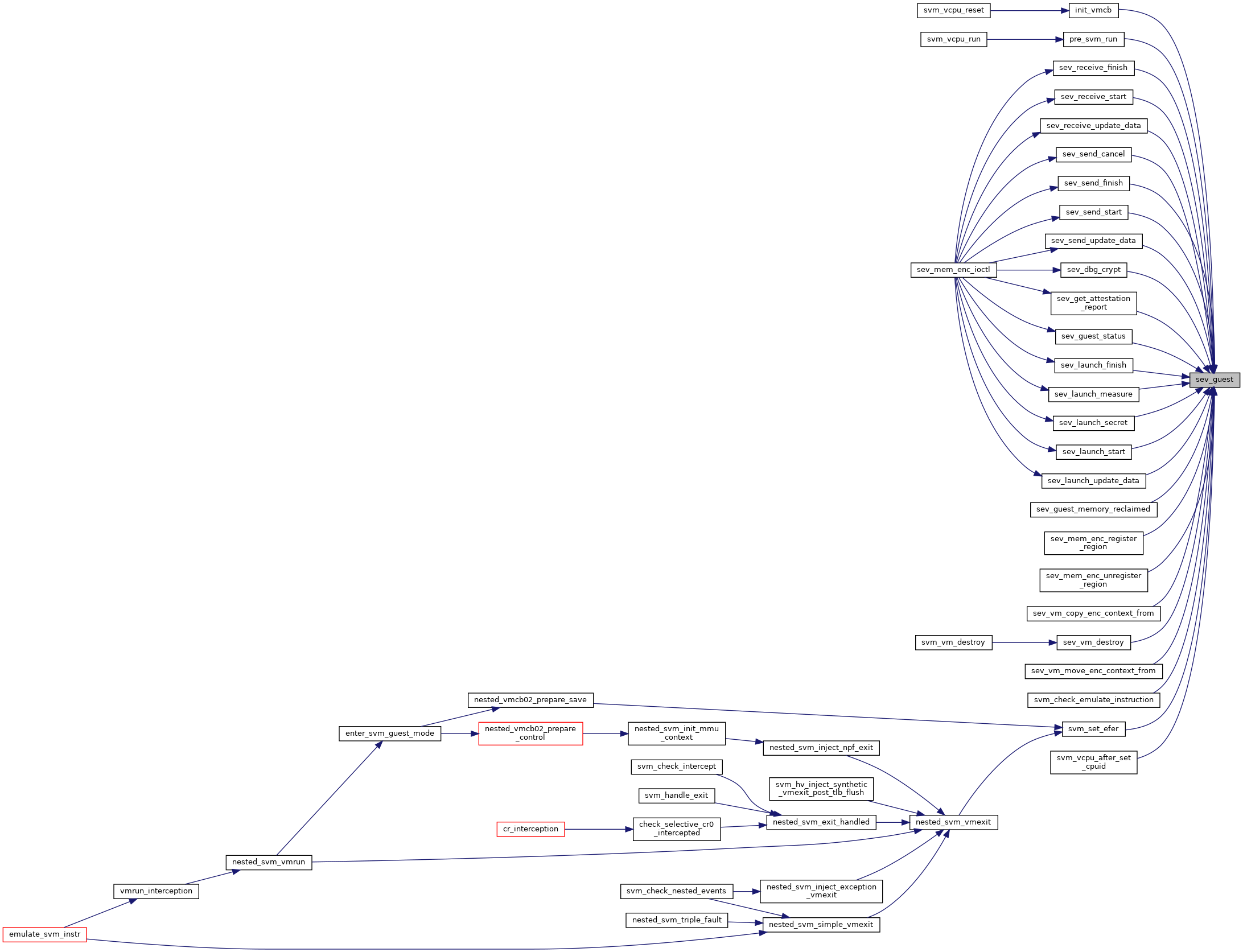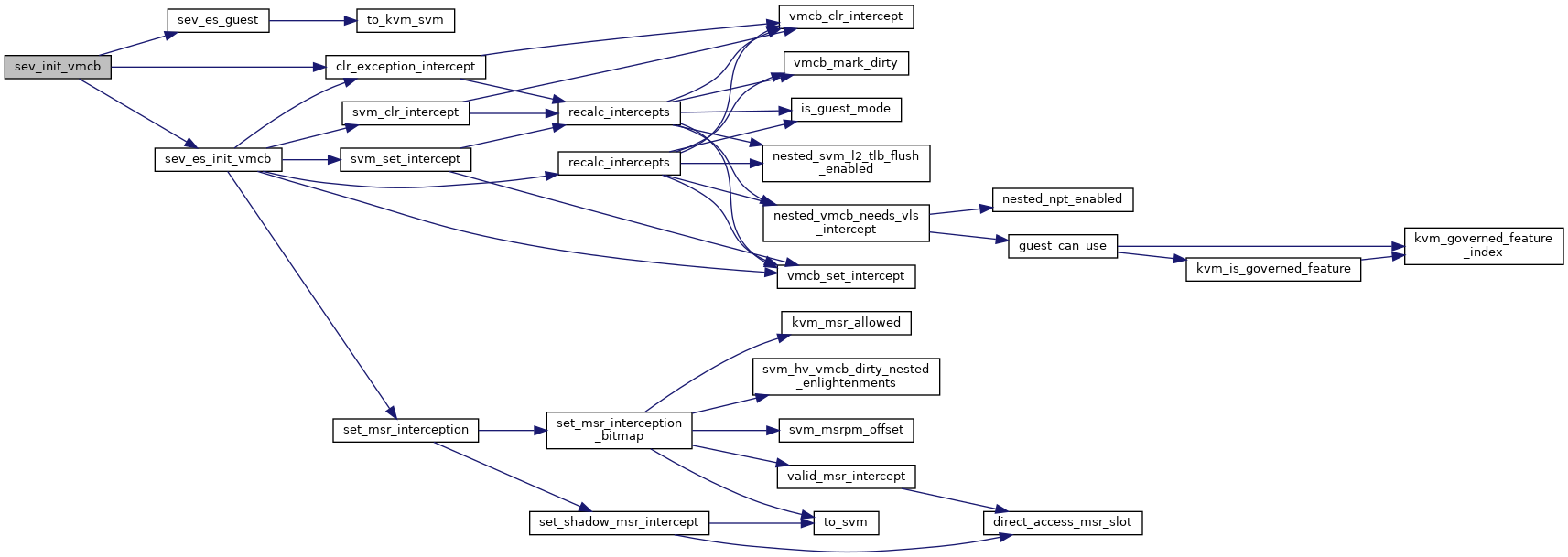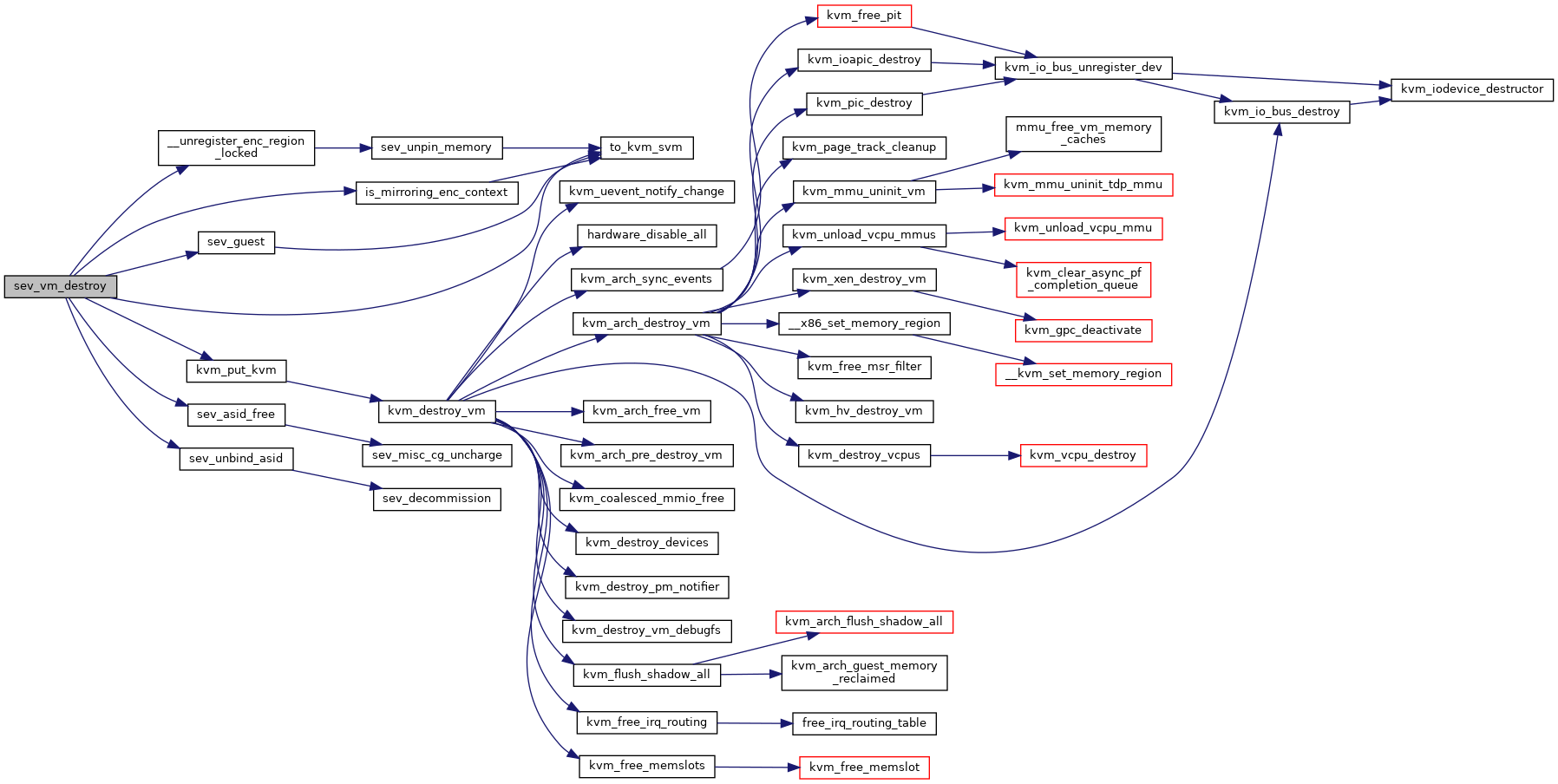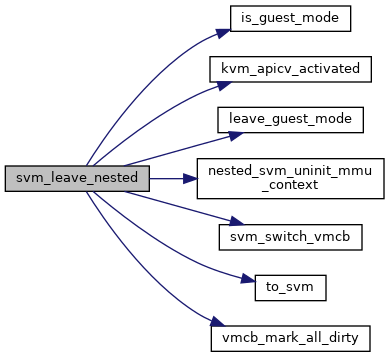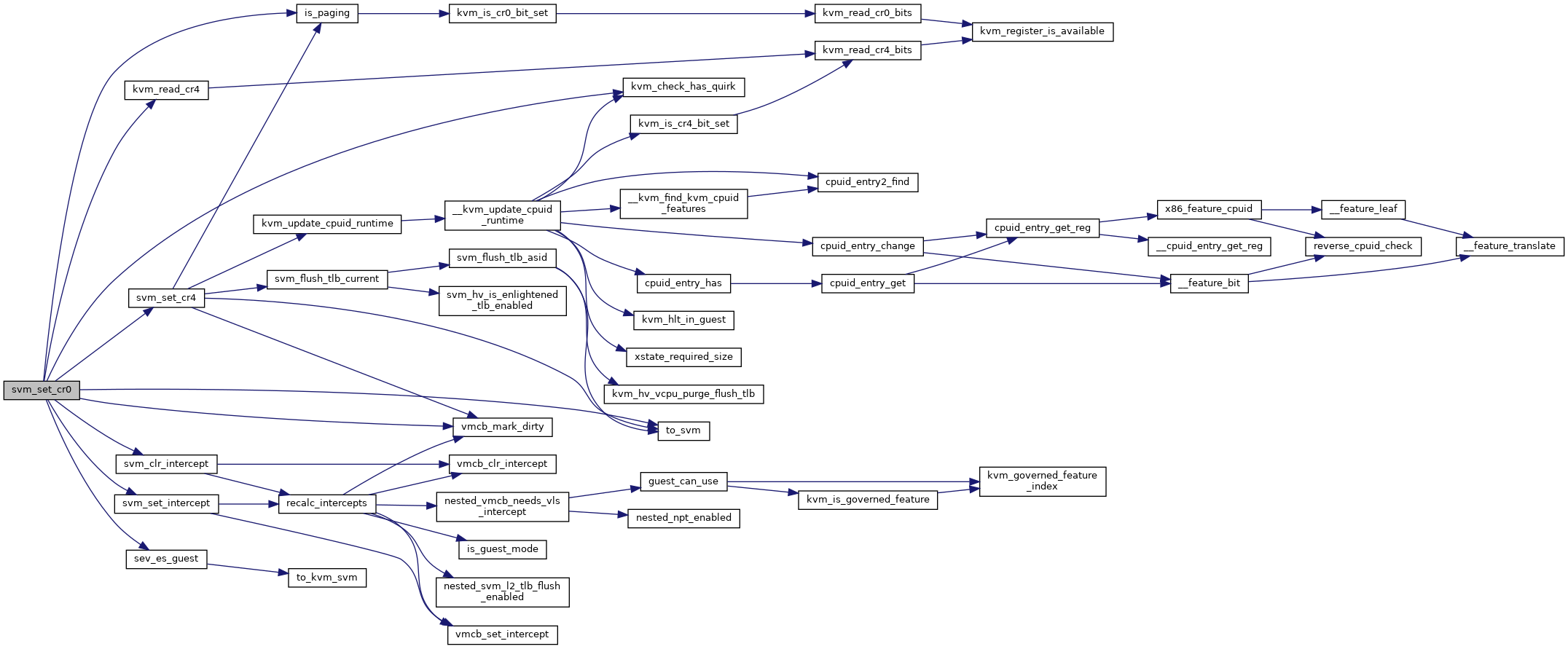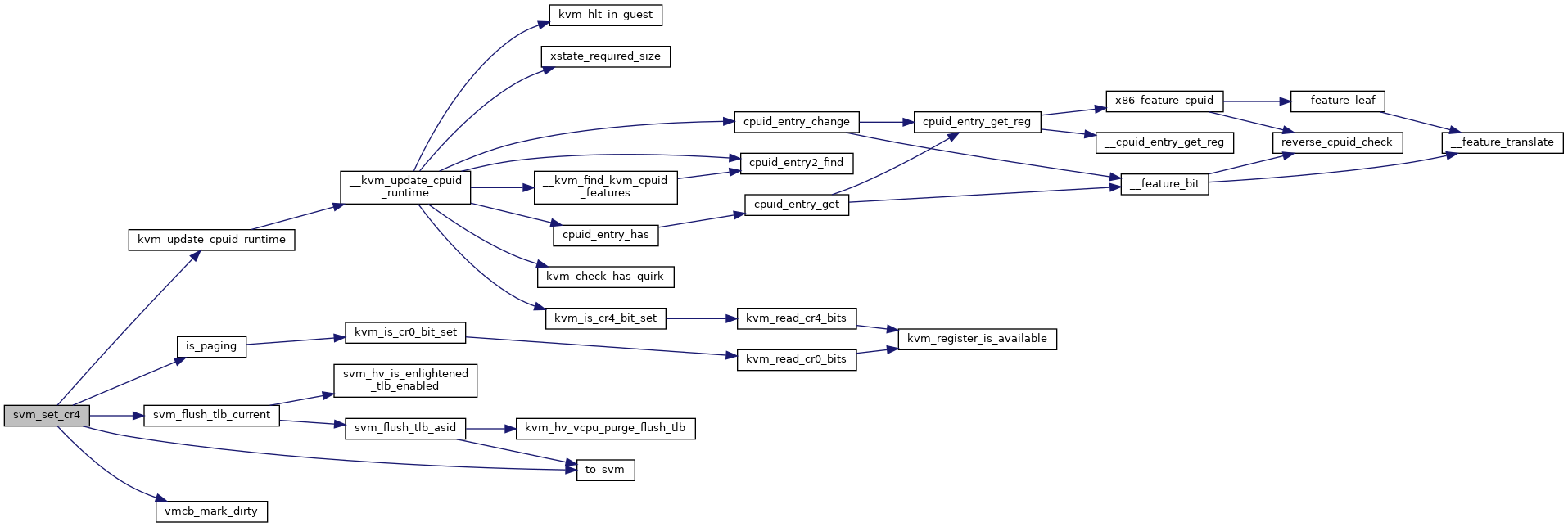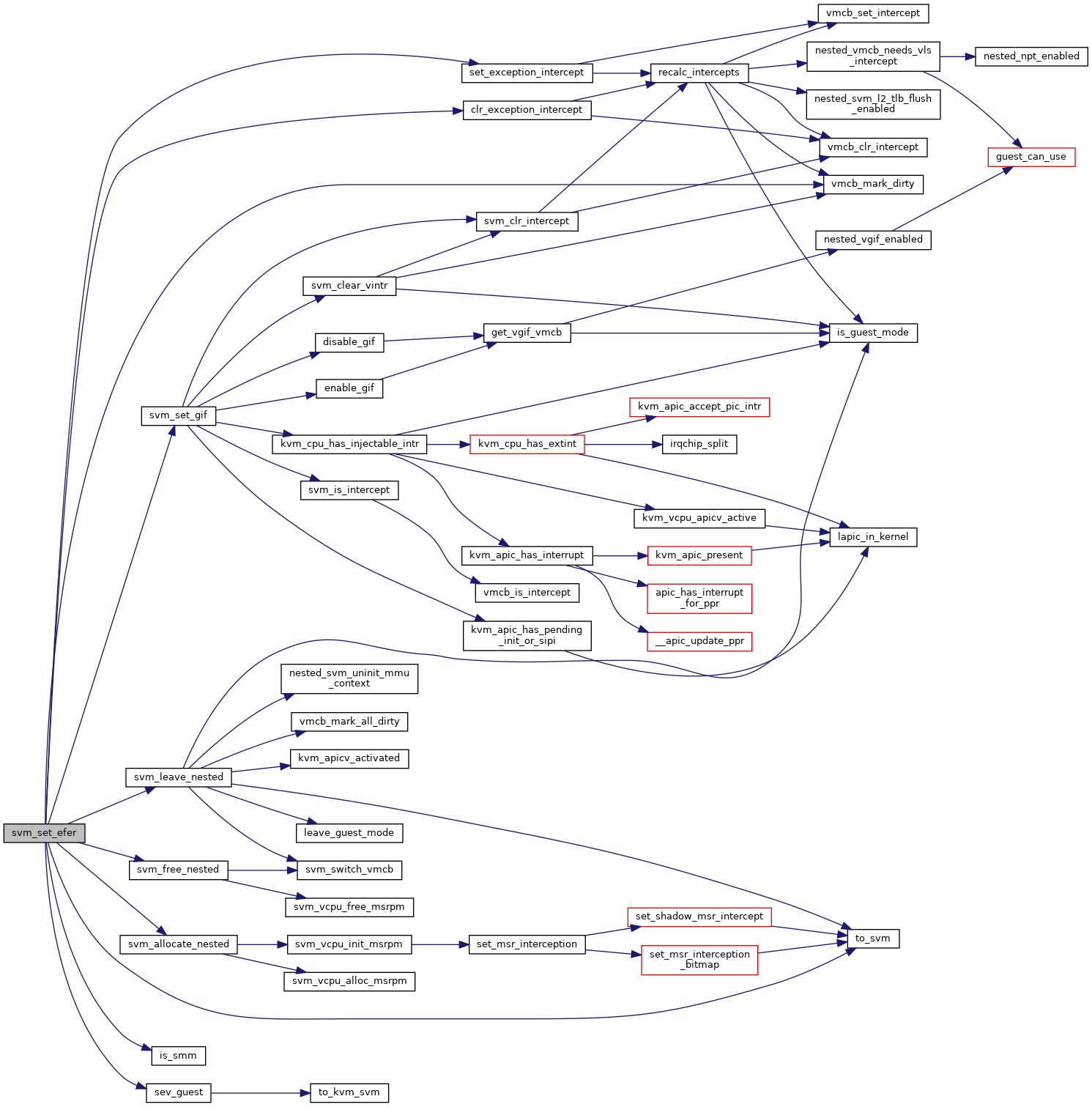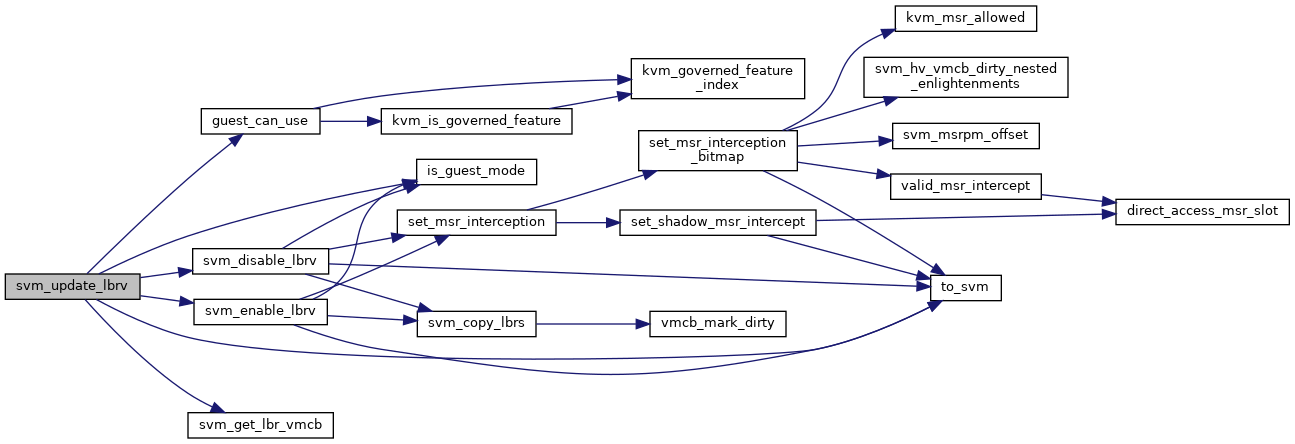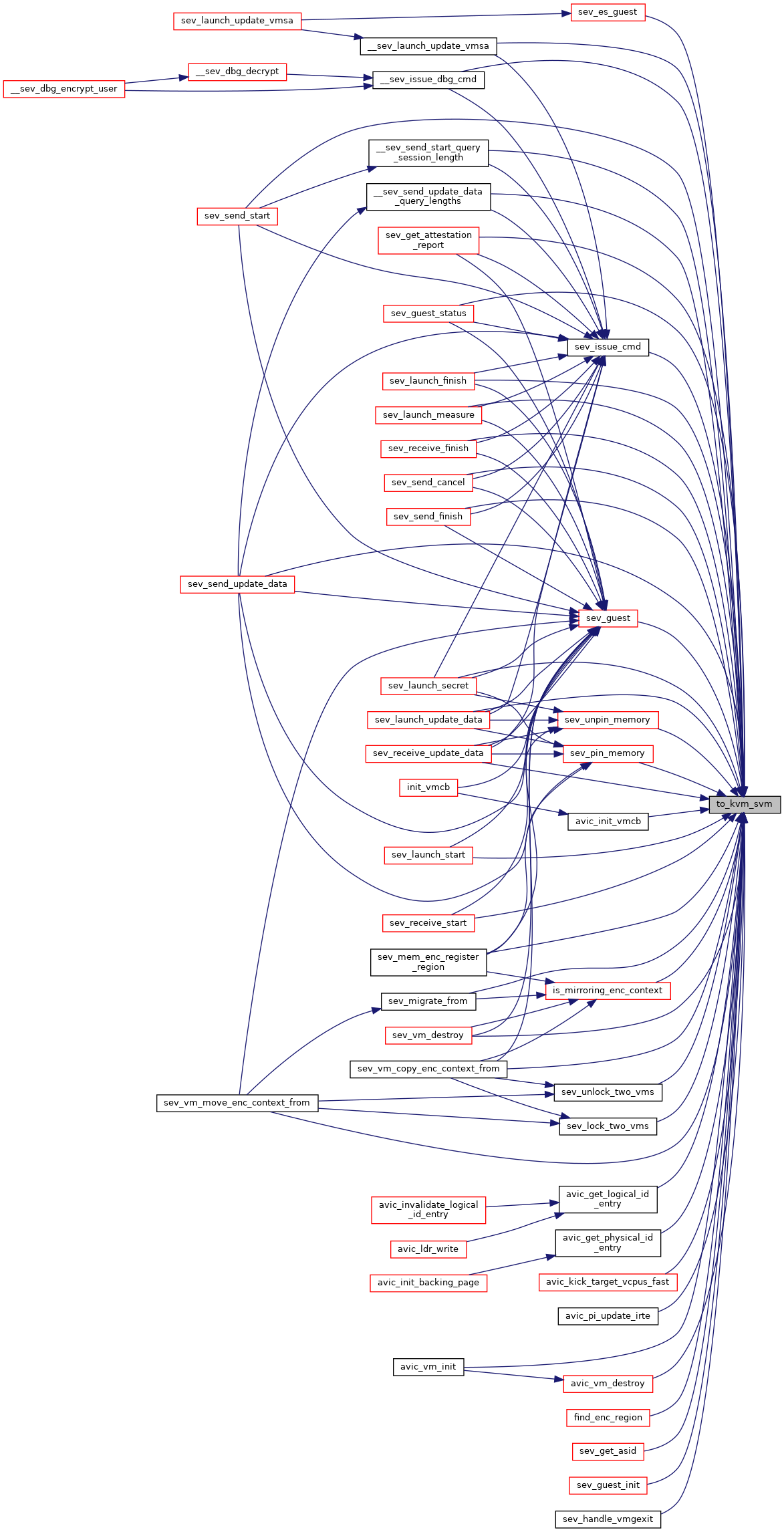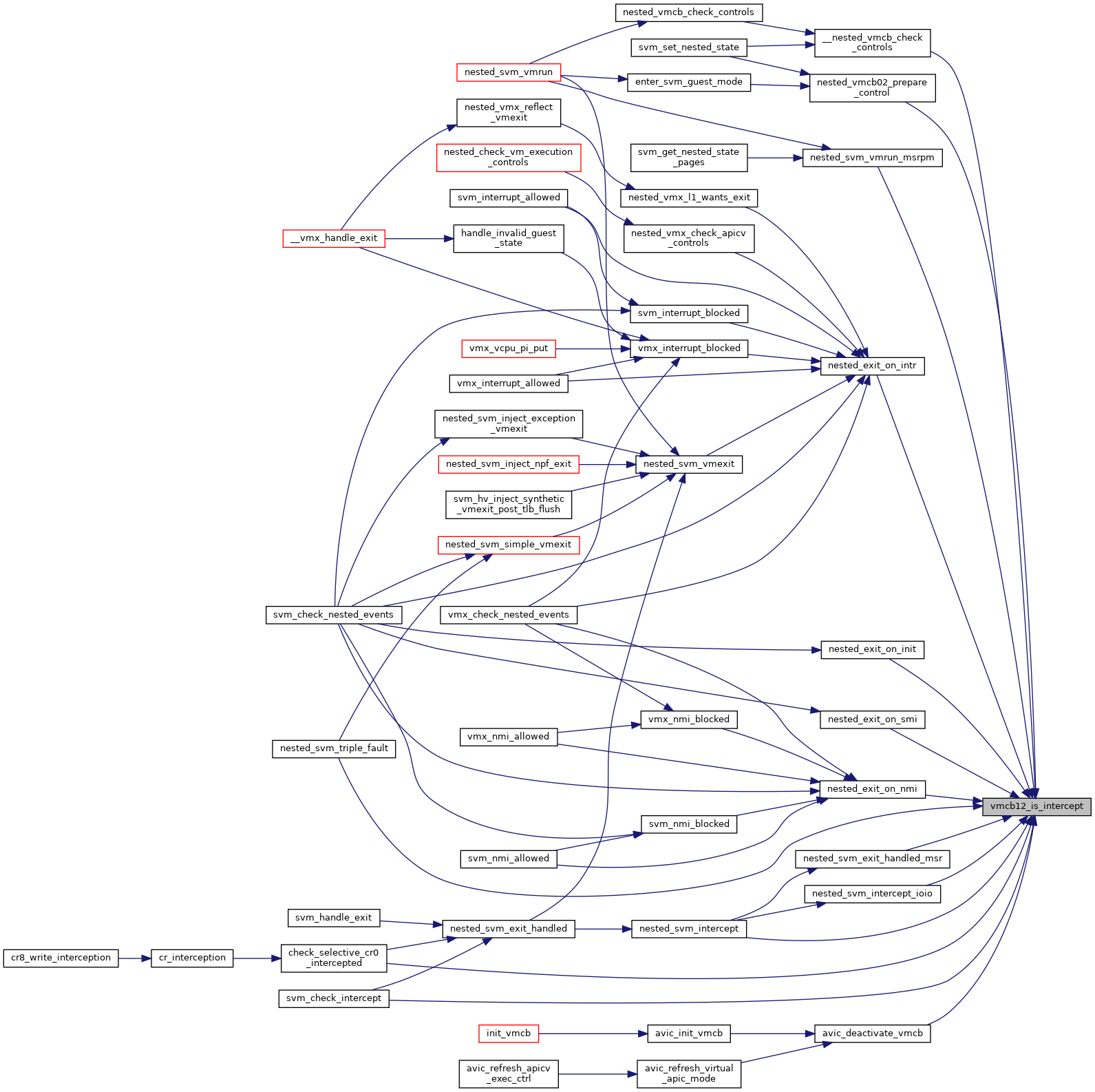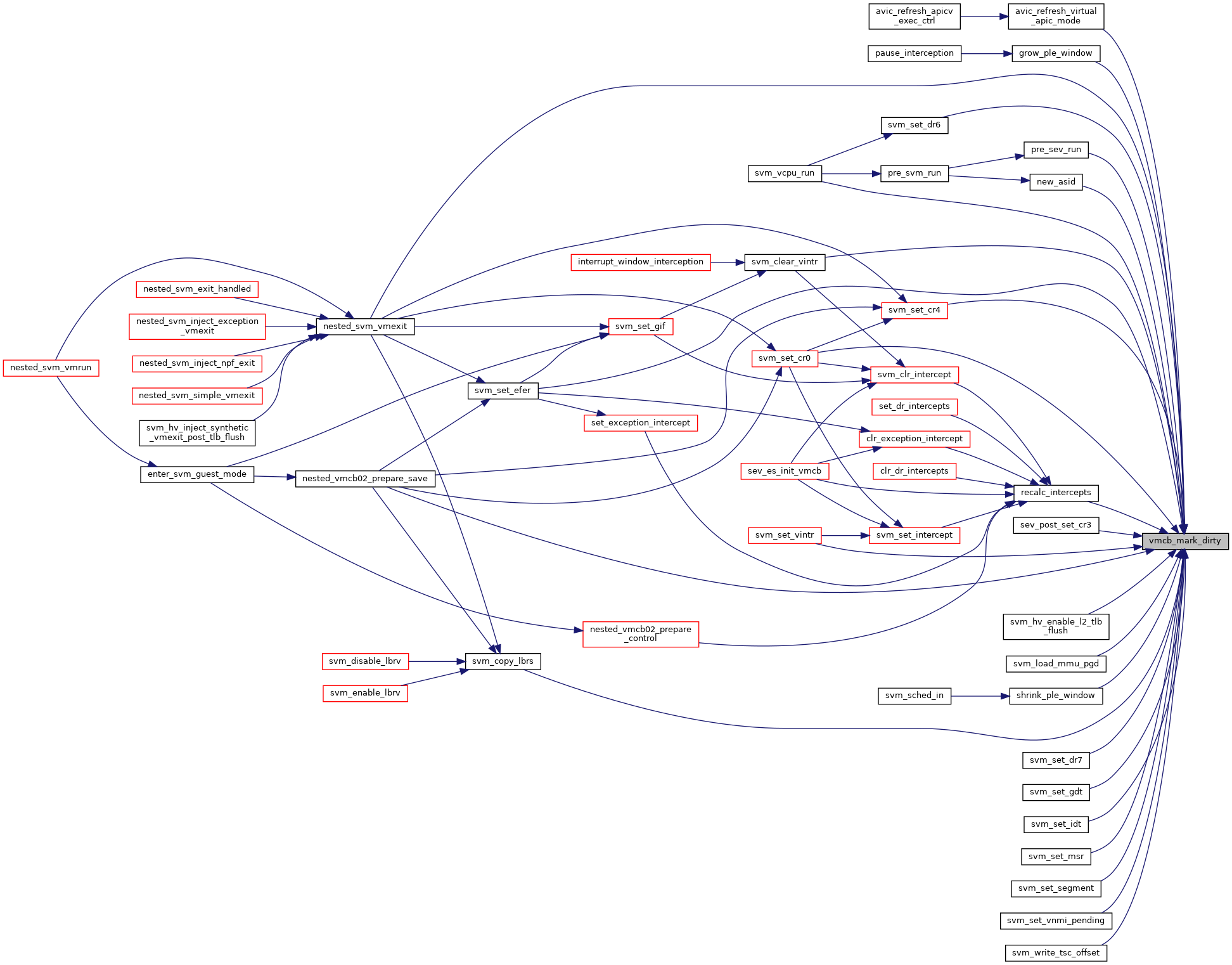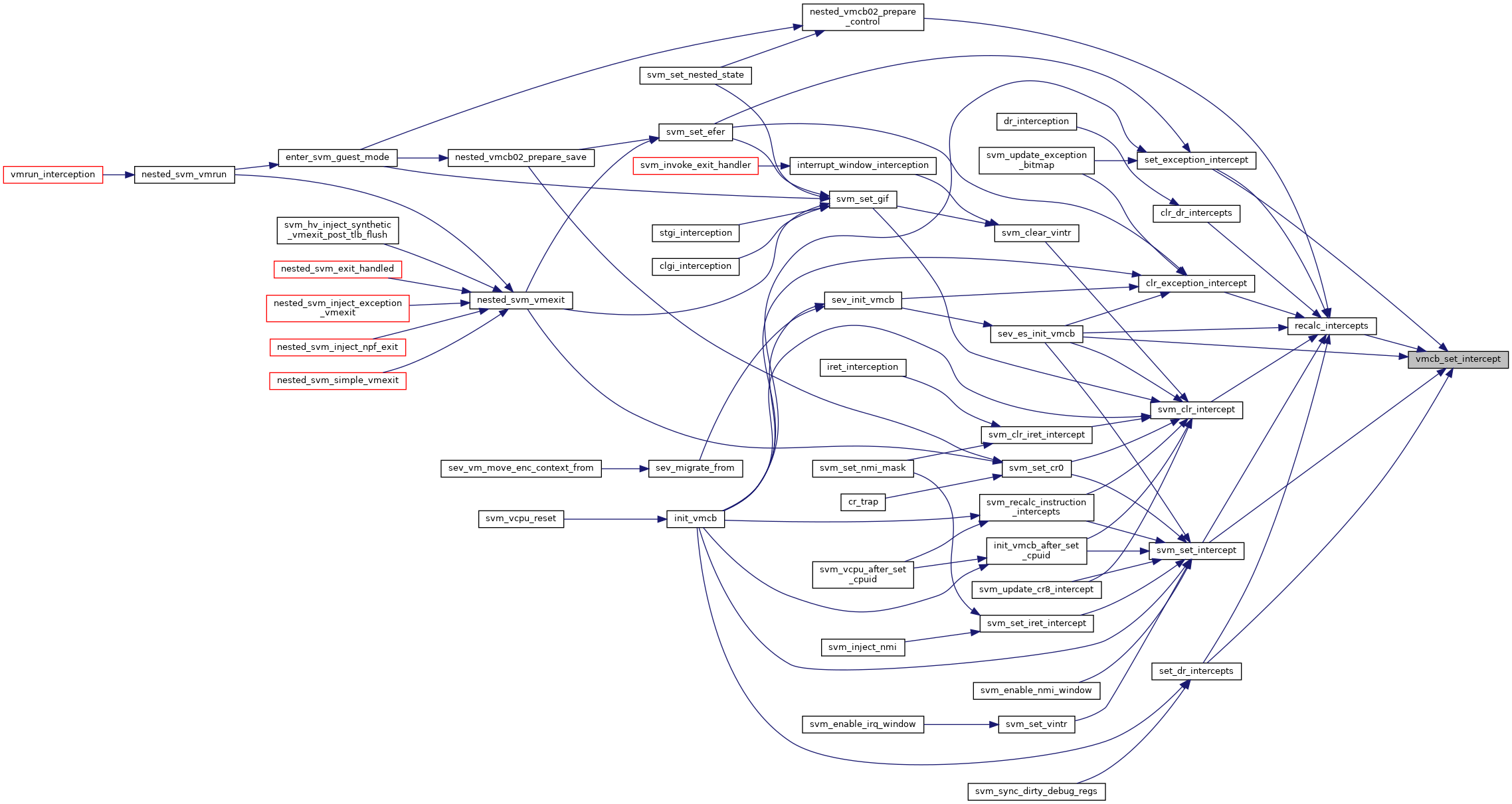#include <linux/kvm_types.h>#include <linux/kvm_host.h>#include <linux/bits.h>#include <asm/svm.h>#include <asm/sev-common.h>#include "cpuid.h"#include "kvm_cache_regs.h"

Go to the source code of this file.
Classes | |
| struct | kvm_sev_info |
| struct | kvm_svm |
| struct | kvm_vmcb_info |
| struct | vmcb_save_area_cached |
| struct | vmcb_ctrl_area_cached |
| struct | svm_nested_state |
| struct | vcpu_sev_es_state |
| struct | vcpu_svm |
| struct | svm_cpu_data |
Macros | |
| #define | __sme_page_pa(x) __sme_set(page_to_pfn(x) << PAGE_SHIFT) |
| #define | IOPM_SIZE PAGE_SIZE * 3 |
| #define | MSRPM_SIZE PAGE_SIZE * 2 |
| #define | MAX_DIRECT_ACCESS_MSRS 47 |
| #define | MSRPM_OFFSETS 32 |
| #define | VMCB_ALL_CLEAN_MASK |
| #define | VMCB_ALWAYS_DIRTY_MASK ((1U << VMCB_INTR) | (1U << VMCB_CR2)) |
| #define | SVM_REGS_LAZY_LOAD_SET (1 << VCPU_EXREG_PDPTR) |
| #define | MSR_INVALID 0xffffffffU |
| #define | DEBUGCTL_RESERVED_BITS (~(0x3fULL)) |
| #define | NESTED_EXIT_HOST 0 /* Exit handled on host level */ |
| #define | NESTED_EXIT_DONE 1 /* Exit caused nested vmexit */ |
| #define | NESTED_EXIT_CONTINUE 2 /* Further checks needed */ |
| #define | AVIC_REQUIRED_APICV_INHIBITS |
| #define | GHCB_VERSION_MAX 1ULL |
| #define | GHCB_VERSION_MIN 1ULL |
| #define | DEFINE_KVM_GHCB_ACCESSORS(field) |
Enumerations | |
| enum | { VMCB_INTERCEPTS , VMCB_PERM_MAP , VMCB_ASID , VMCB_INTR , VMCB_NPT , VMCB_CR , VMCB_DR , VMCB_DT , VMCB_SEG , VMCB_CR2 , VMCB_LBR , VMCB_AVIC , VMCB_SW = 31 } |
Functions | |
| DECLARE_PER_CPU (struct svm_cpu_data, svm_data) | |
| void | recalc_intercepts (struct vcpu_svm *svm) |
| static __always_inline struct kvm_svm * | to_kvm_svm (struct kvm *kvm) |
| static __always_inline bool | sev_guest (struct kvm *kvm) |
| static __always_inline bool | sev_es_guest (struct kvm *kvm) |
| static void | vmcb_mark_all_dirty (struct vmcb *vmcb) |
| static void | vmcb_mark_all_clean (struct vmcb *vmcb) |
| static void | vmcb_mark_dirty (struct vmcb *vmcb, int bit) |
| static bool | vmcb_is_dirty (struct vmcb *vmcb, int bit) |
| static __always_inline struct vcpu_svm * | to_svm (struct kvm_vcpu *vcpu) |
| static void | vmcb_set_intercept (struct vmcb_control_area *control, u32 bit) |
| static void | vmcb_clr_intercept (struct vmcb_control_area *control, u32 bit) |
| static bool | vmcb_is_intercept (struct vmcb_control_area *control, u32 bit) |
| static bool | vmcb12_is_intercept (struct vmcb_ctrl_area_cached *control, u32 bit) |
| static void | set_exception_intercept (struct vcpu_svm *svm, u32 bit) |
| static void | clr_exception_intercept (struct vcpu_svm *svm, u32 bit) |
| static void | svm_set_intercept (struct vcpu_svm *svm, int bit) |
| static void | svm_clr_intercept (struct vcpu_svm *svm, int bit) |
| static bool | svm_is_intercept (struct vcpu_svm *svm, int bit) |
| static bool | nested_vgif_enabled (struct vcpu_svm *svm) |
| static struct vmcb * | get_vgif_vmcb (struct vcpu_svm *svm) |
| static void | enable_gif (struct vcpu_svm *svm) |
| static void | disable_gif (struct vcpu_svm *svm) |
| static bool | gif_set (struct vcpu_svm *svm) |
| static bool | nested_npt_enabled (struct vcpu_svm *svm) |
| static bool | nested_vnmi_enabled (struct vcpu_svm *svm) |
| static bool | is_x2apic_msrpm_offset (u32 offset) |
| static struct vmcb * | get_vnmi_vmcb_l1 (struct vcpu_svm *svm) |
| static bool | is_vnmi_enabled (struct vcpu_svm *svm) |
| u32 | svm_msrpm_offset (u32 msr) |
| u32 * | svm_vcpu_alloc_msrpm (void) |
| void | svm_vcpu_init_msrpm (struct kvm_vcpu *vcpu, u32 *msrpm) |
| void | svm_vcpu_free_msrpm (u32 *msrpm) |
| void | svm_copy_lbrs (struct vmcb *to_vmcb, struct vmcb *from_vmcb) |
| void | svm_update_lbrv (struct kvm_vcpu *vcpu) |
| int | svm_set_efer (struct kvm_vcpu *vcpu, u64 efer) |
| void | svm_set_cr0 (struct kvm_vcpu *vcpu, unsigned long cr0) |
| void | svm_set_cr4 (struct kvm_vcpu *vcpu, unsigned long cr4) |
| void | disable_nmi_singlestep (struct vcpu_svm *svm) |
| bool | svm_smi_blocked (struct kvm_vcpu *vcpu) |
| bool | svm_nmi_blocked (struct kvm_vcpu *vcpu) |
| bool | svm_interrupt_blocked (struct kvm_vcpu *vcpu) |
| void | svm_set_gif (struct vcpu_svm *svm, bool value) |
| int | svm_invoke_exit_handler (struct kvm_vcpu *vcpu, u64 exit_code) |
| void | set_msr_interception (struct kvm_vcpu *vcpu, u32 *msrpm, u32 msr, int read, int write) |
| void | svm_set_x2apic_msr_interception (struct vcpu_svm *svm, bool disable) |
| void | svm_complete_interrupt_delivery (struct kvm_vcpu *vcpu, int delivery_mode, int trig_mode, int vec) |
| static bool | nested_svm_virtualize_tpr (struct kvm_vcpu *vcpu) |
| static bool | nested_exit_on_smi (struct vcpu_svm *svm) |
| static bool | nested_exit_on_intr (struct vcpu_svm *svm) |
| static bool | nested_exit_on_nmi (struct vcpu_svm *svm) |
| int | enter_svm_guest_mode (struct kvm_vcpu *vcpu, u64 vmcb_gpa, struct vmcb *vmcb12, bool from_vmrun) |
| void | svm_leave_nested (struct kvm_vcpu *vcpu) |
| void | svm_free_nested (struct vcpu_svm *svm) |
| int | svm_allocate_nested (struct vcpu_svm *svm) |
| int | nested_svm_vmrun (struct kvm_vcpu *vcpu) |
| void | svm_copy_vmrun_state (struct vmcb_save_area *to_save, struct vmcb_save_area *from_save) |
| void | svm_copy_vmloadsave_state (struct vmcb *to_vmcb, struct vmcb *from_vmcb) |
| int | nested_svm_vmexit (struct vcpu_svm *svm) |
| static int | nested_svm_simple_vmexit (struct vcpu_svm *svm, u32 exit_code) |
| int | nested_svm_exit_handled (struct vcpu_svm *svm) |
| int | nested_svm_check_permissions (struct kvm_vcpu *vcpu) |
| int | nested_svm_check_exception (struct vcpu_svm *svm, unsigned nr, bool has_error_code, u32 error_code) |
| int | nested_svm_exit_special (struct vcpu_svm *svm) |
| void | nested_svm_update_tsc_ratio_msr (struct kvm_vcpu *vcpu) |
| void | svm_write_tsc_multiplier (struct kvm_vcpu *vcpu) |
| void | nested_copy_vmcb_control_to_cache (struct vcpu_svm *svm, struct vmcb_control_area *control) |
| void | nested_copy_vmcb_save_to_cache (struct vcpu_svm *svm, struct vmcb_save_area *save) |
| void | nested_sync_control_from_vmcb02 (struct vcpu_svm *svm) |
| void | nested_vmcb02_compute_g_pat (struct vcpu_svm *svm) |
| void | svm_switch_vmcb (struct vcpu_svm *svm, struct kvm_vmcb_info *target_vmcb) |
| bool | avic_hardware_setup (void) |
| int | avic_ga_log_notifier (u32 ga_tag) |
| void | avic_vm_destroy (struct kvm *kvm) |
| int | avic_vm_init (struct kvm *kvm) |
| void | avic_init_vmcb (struct vcpu_svm *svm, struct vmcb *vmcb) |
| int | avic_incomplete_ipi_interception (struct kvm_vcpu *vcpu) |
| int | avic_unaccelerated_access_interception (struct kvm_vcpu *vcpu) |
| int | avic_init_vcpu (struct vcpu_svm *svm) |
| void | avic_vcpu_load (struct kvm_vcpu *vcpu, int cpu) |
| void | avic_vcpu_put (struct kvm_vcpu *vcpu) |
| void | avic_apicv_post_state_restore (struct kvm_vcpu *vcpu) |
| void | avic_refresh_apicv_exec_ctrl (struct kvm_vcpu *vcpu) |
| int | avic_pi_update_irte (struct kvm *kvm, unsigned int host_irq, uint32_t guest_irq, bool set) |
| void | avic_vcpu_blocking (struct kvm_vcpu *vcpu) |
| void | avic_vcpu_unblocking (struct kvm_vcpu *vcpu) |
| void | avic_ring_doorbell (struct kvm_vcpu *vcpu) |
| unsigned long | avic_vcpu_get_apicv_inhibit_reasons (struct kvm_vcpu *vcpu) |
| void | avic_refresh_virtual_apic_mode (struct kvm_vcpu *vcpu) |
| void | sev_vm_destroy (struct kvm *kvm) |
| int | sev_mem_enc_ioctl (struct kvm *kvm, void __user *argp) |
| int | sev_mem_enc_register_region (struct kvm *kvm, struct kvm_enc_region *range) |
| int | sev_mem_enc_unregister_region (struct kvm *kvm, struct kvm_enc_region *range) |
| int | sev_vm_copy_enc_context_from (struct kvm *kvm, unsigned int source_fd) |
| int | sev_vm_move_enc_context_from (struct kvm *kvm, unsigned int source_fd) |
| void | sev_guest_memory_reclaimed (struct kvm *kvm) |
| void | pre_sev_run (struct vcpu_svm *svm, int cpu) |
| void __init | sev_set_cpu_caps (void) |
| void __init | sev_hardware_setup (void) |
| void | sev_hardware_unsetup (void) |
| int | sev_cpu_init (struct svm_cpu_data *sd) |
| void | sev_init_vmcb (struct vcpu_svm *svm) |
| void | sev_vcpu_after_set_cpuid (struct vcpu_svm *svm) |
| void | sev_free_vcpu (struct kvm_vcpu *vcpu) |
| int | sev_handle_vmgexit (struct kvm_vcpu *vcpu) |
| int | sev_es_string_io (struct vcpu_svm *svm, int size, unsigned int port, int in) |
| void | sev_es_vcpu_reset (struct vcpu_svm *svm) |
| void | sev_vcpu_deliver_sipi_vector (struct kvm_vcpu *vcpu, u8 vector) |
| void | sev_es_prepare_switch_to_guest (struct sev_es_save_area *hostsa) |
| void | sev_es_unmap_ghcb (struct vcpu_svm *svm) |
| void | __svm_sev_es_vcpu_run (struct vcpu_svm *svm, bool spec_ctrl_intercepted) |
| void | __svm_vcpu_run (struct vcpu_svm *svm, bool spec_ctrl_intercepted) |
Variables | |
| u32 msrpm_offsets[MSRPM_OFFSETS] | __read_mostly |
| bool | npt_enabled |
| int | nrips |
| int | vgif |
| bool | intercept_smi |
| bool | x2avic_enabled |
| bool | vnmi |
| bool | dump_invalid_vmcb |
| struct kvm_x86_nested_ops | svm_nested_ops |
| unsigned int | max_sev_asid |
Macro Definition Documentation
◆ __sme_page_pa
| #define __sme_page_pa | ( | x | ) | __sme_set(page_to_pfn(x) << PAGE_SHIFT) |
◆ AVIC_REQUIRED_APICV_INHIBITS
| #define AVIC_REQUIRED_APICV_INHIBITS |
◆ DEBUGCTL_RESERVED_BITS
◆ DEFINE_KVM_GHCB_ACCESSORS
| #define DEFINE_KVM_GHCB_ACCESSORS | ( | field | ) |
◆ GHCB_VERSION_MAX
◆ GHCB_VERSION_MIN
◆ IOPM_SIZE
◆ MAX_DIRECT_ACCESS_MSRS
◆ MSR_INVALID
◆ MSRPM_OFFSETS
◆ MSRPM_SIZE
◆ NESTED_EXIT_CONTINUE
◆ NESTED_EXIT_DONE
◆ NESTED_EXIT_HOST
◆ SVM_REGS_LAZY_LOAD_SET
◆ VMCB_ALL_CLEAN_MASK
| #define VMCB_ALL_CLEAN_MASK |
◆ VMCB_ALWAYS_DIRTY_MASK
Enumeration Type Documentation
◆ anonymous enum
| anonymous enum |
Function Documentation
◆ __svm_sev_es_vcpu_run()
| void __svm_sev_es_vcpu_run | ( | struct vcpu_svm * | svm, |
| bool | spec_ctrl_intercepted | ||
| ) |

◆ __svm_vcpu_run()
| void __svm_vcpu_run | ( | struct vcpu_svm * | svm, |
| bool | spec_ctrl_intercepted | ||
| ) |

◆ avic_apicv_post_state_restore()
| void avic_apicv_post_state_restore | ( | struct kvm_vcpu * | vcpu | ) |
Definition at line 738 of file avic.c.
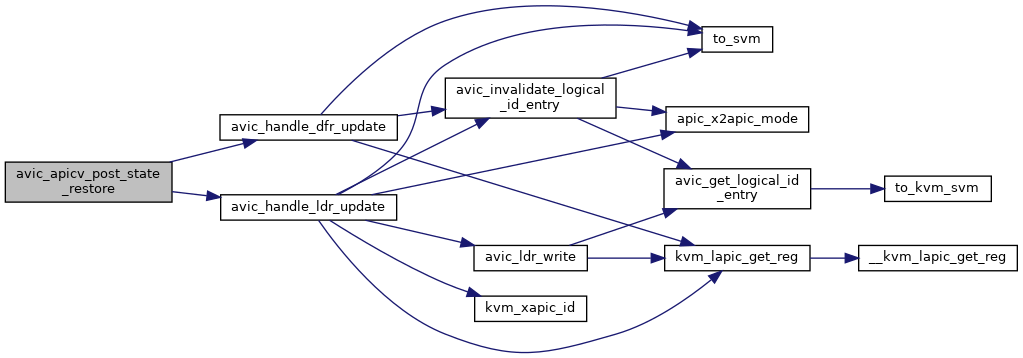

◆ avic_ga_log_notifier()
| int avic_ga_log_notifier | ( | u32 | ga_tag | ) |
◆ avic_hardware_setup()
| bool avic_hardware_setup | ( | void | ) |
◆ avic_incomplete_ipi_interception()
| int avic_incomplete_ipi_interception | ( | struct kvm_vcpu * | vcpu | ) |
Definition at line 490 of file avic.c.
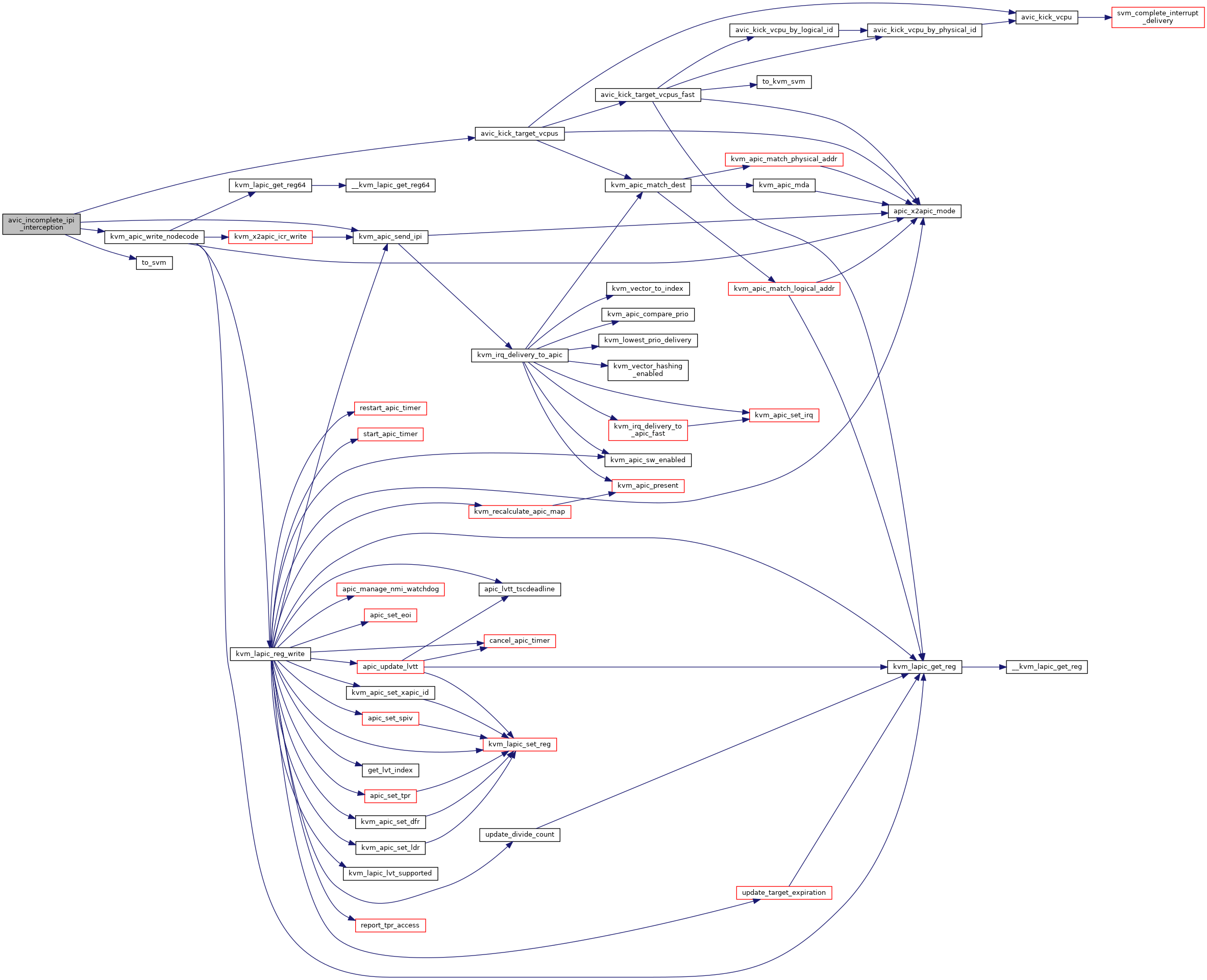
◆ avic_init_vcpu()
| int avic_init_vcpu | ( | struct vcpu_svm * | svm | ) |
Definition at line 719 of file avic.c.
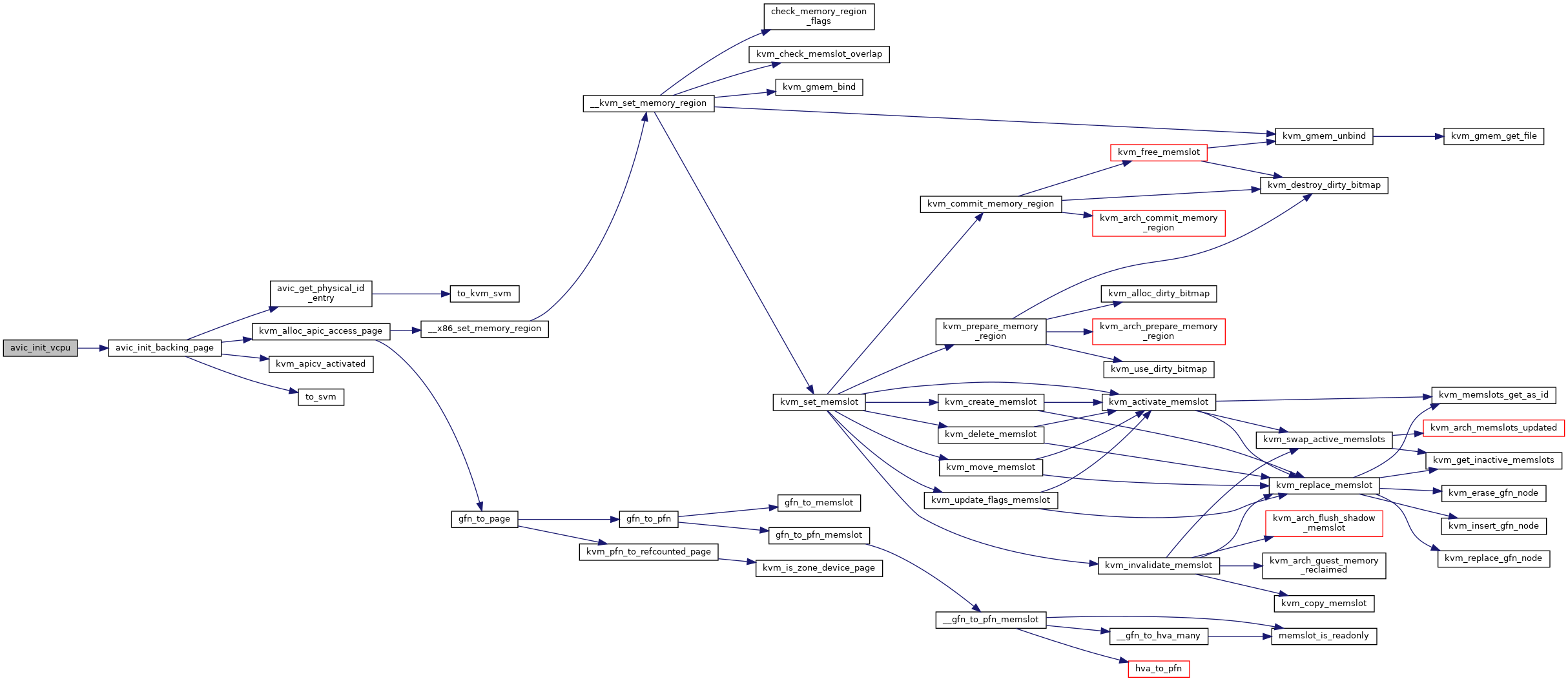

◆ avic_init_vmcb()
| void avic_init_vmcb | ( | struct vcpu_svm * | svm, |
| struct vmcb * | vmcb | ||
| ) |
◆ avic_pi_update_irte()
| int avic_pi_update_irte | ( | struct kvm * | kvm, |
| unsigned int | host_irq, | ||
| uint32_t | guest_irq, | ||
| bool | set | ||
| ) |
Here, we setup with legacy mode in the following cases:
- When cannot target interrupt to a specific vcpu.
- Unsetting posted interrupt.
- APIC virtualization is disabled for the vcpu.
- IRQ has incompatible delivery mode (SMI, INIT, etc)
Here, we successfully setting up vcpu affinity in IOMMU guest mode. Now, we need to store the posted interrupt information in a per-vcpu ir_list so that we can reference to them directly when we update vcpu scheduling information in IOMMU irte.
Here, pi is used to:
- Tell IOMMU to use legacy mode for this interrupt.
- Retrieve ga_tag of prior interrupt remapping data.
Check if the posted interrupt was previously setup with the guest_mode by checking if the ga_tag was cached. If so, we need to clean up the per-vcpu ir_list.
Definition at line 894 of file avic.c.
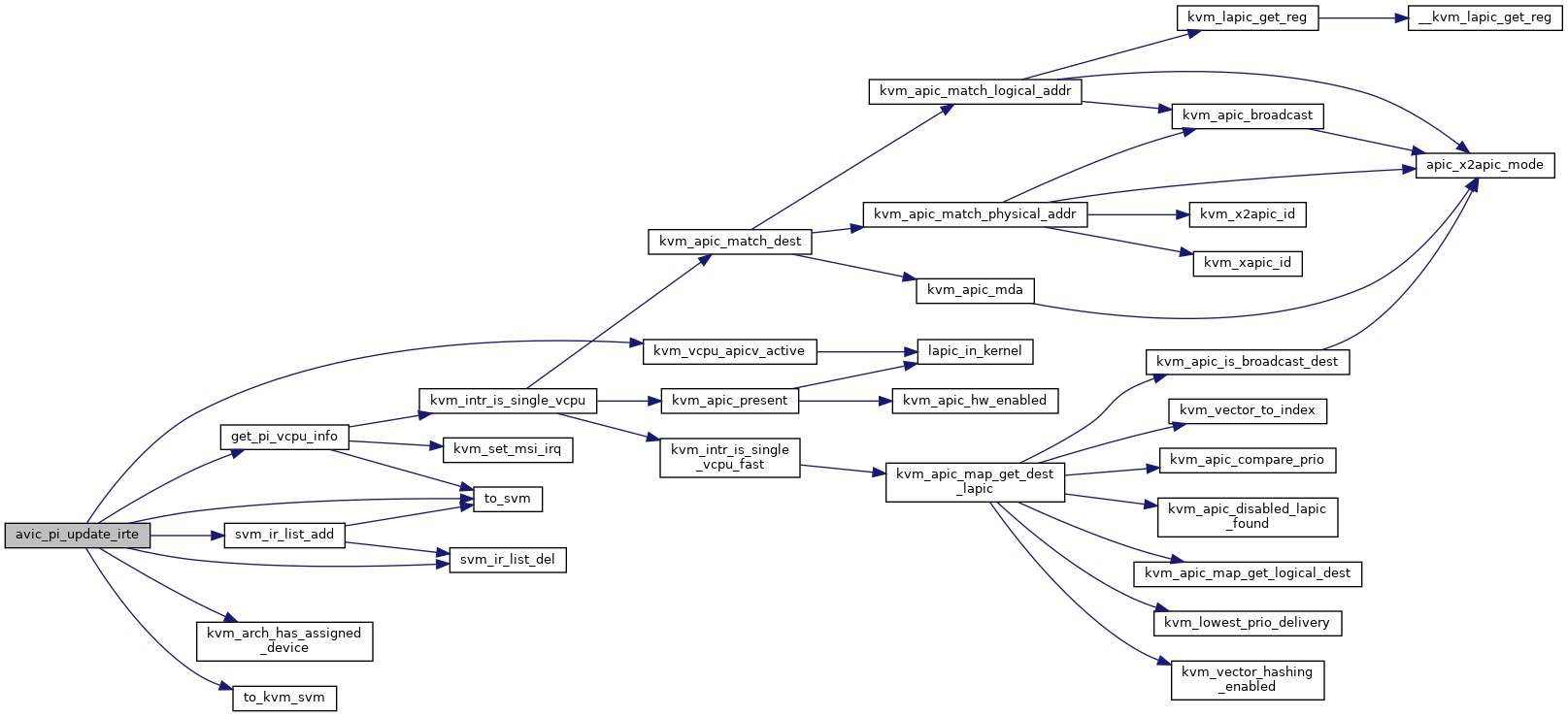
◆ avic_refresh_apicv_exec_ctrl()
| void avic_refresh_apicv_exec_ctrl | ( | struct kvm_vcpu * | vcpu | ) |
Definition at line 1136 of file avic.c.
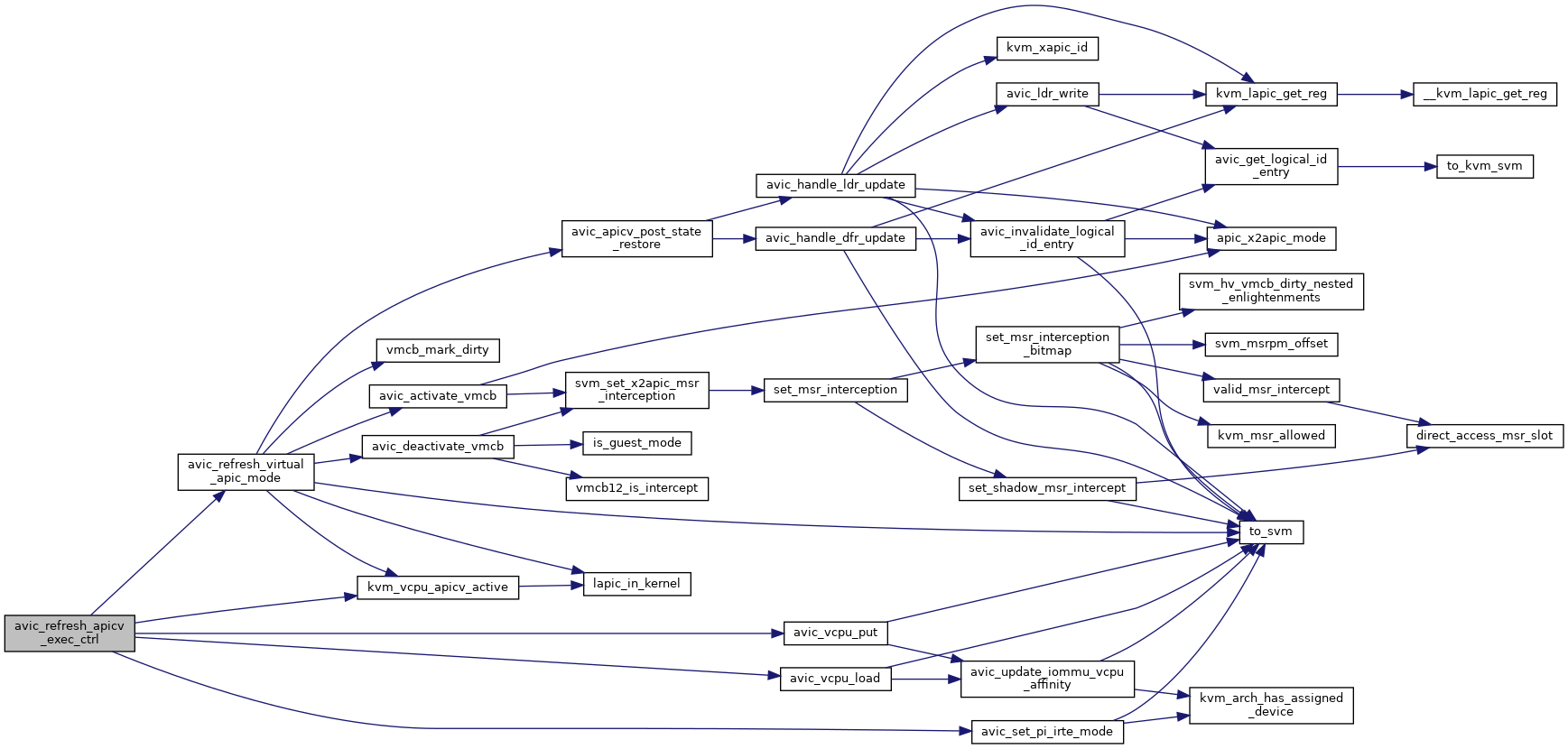
◆ avic_refresh_virtual_apic_mode()
| void avic_refresh_virtual_apic_mode | ( | struct kvm_vcpu * | vcpu | ) |
During AVIC temporary deactivation, guest could update APIC ID, DFR and LDR registers, which would not be trapped by avic_unaccelerated_access_interception(). In this case, we need to check and update the AVIC logical APIC ID table accordingly before re-activating.
Definition at line 1112 of file avic.c.
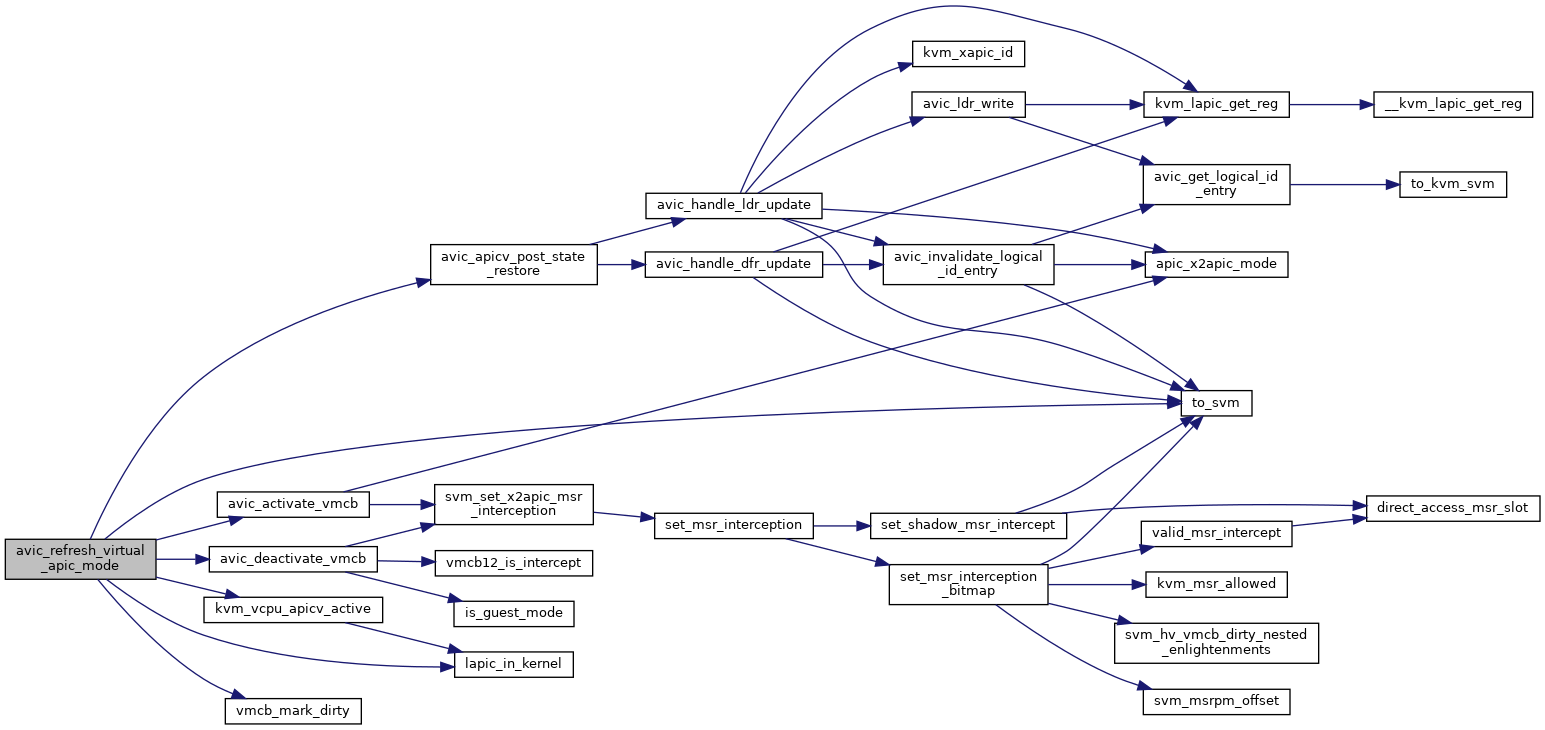

◆ avic_ring_doorbell()
| void avic_ring_doorbell | ( | struct kvm_vcpu * | vcpu | ) |
◆ avic_unaccelerated_access_interception()
| int avic_unaccelerated_access_interception | ( | struct kvm_vcpu * | vcpu | ) |
Definition at line 693 of file avic.c.
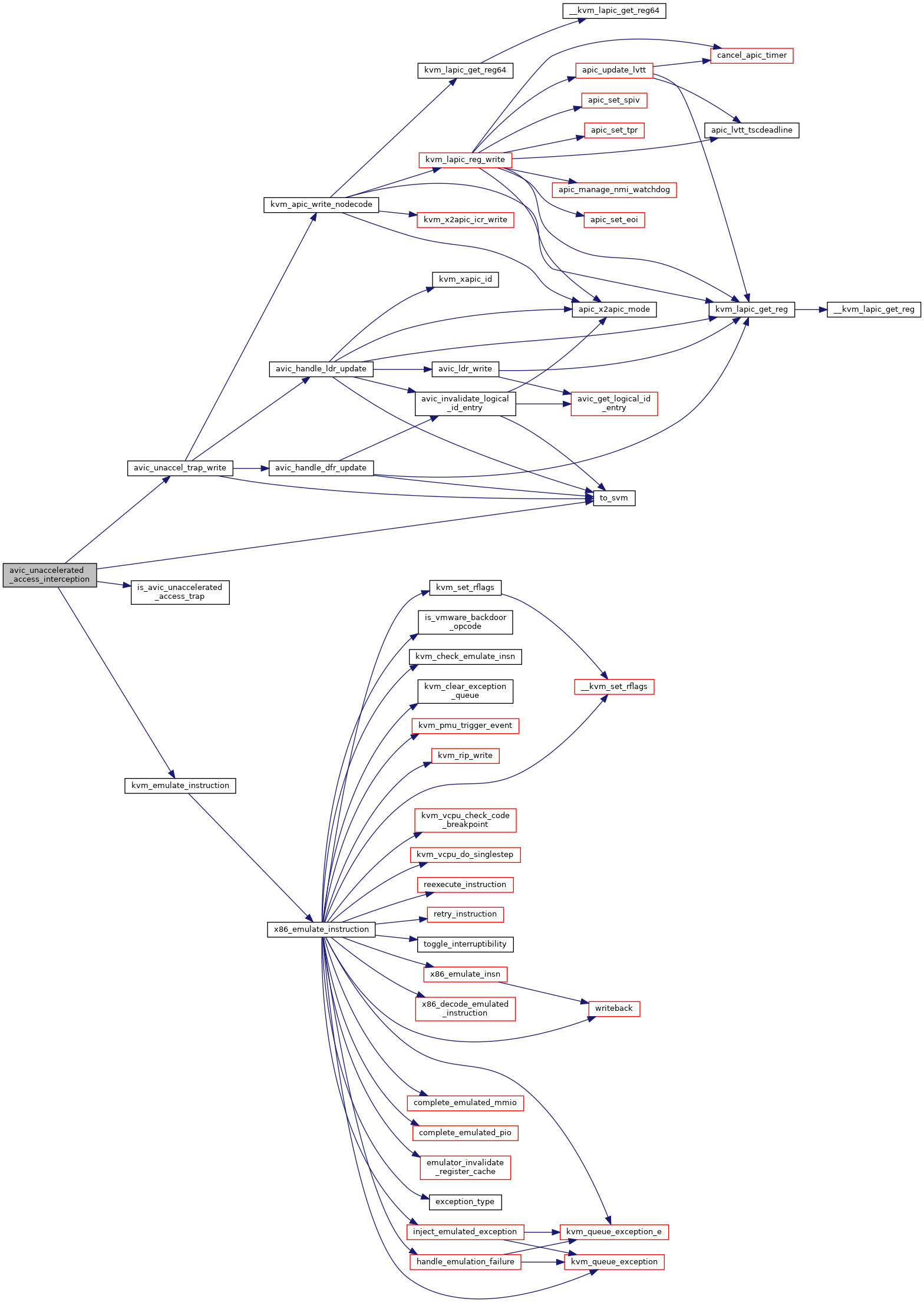
◆ avic_vcpu_blocking()
| void avic_vcpu_blocking | ( | struct kvm_vcpu * | vcpu | ) |
◆ avic_vcpu_get_apicv_inhibit_reasons()
| unsigned long avic_vcpu_get_apicv_inhibit_reasons | ( | struct kvm_vcpu * | vcpu | ) |
◆ avic_vcpu_load()
| void avic_vcpu_load | ( | struct kvm_vcpu * | vcpu, |
| int | cpu | ||
| ) |
Definition at line 1028 of file avic.c.

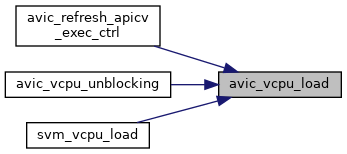
◆ avic_vcpu_put()
| void avic_vcpu_put | ( | struct kvm_vcpu * | vcpu | ) |
◆ avic_vcpu_unblocking()
| void avic_vcpu_unblocking | ( | struct kvm_vcpu * | vcpu | ) |
◆ avic_vm_destroy()
| void avic_vm_destroy | ( | struct kvm * | kvm | ) |
◆ avic_vm_init()
| int avic_vm_init | ( | struct kvm * | kvm | ) |
◆ clr_exception_intercept()
|
inlinestatic |
◆ DECLARE_PER_CPU()
| DECLARE_PER_CPU | ( | struct svm_cpu_data | , |
| svm_data | |||
| ) |
◆ disable_gif()
|
inlinestatic |
◆ disable_nmi_singlestep()
| void disable_nmi_singlestep | ( | struct vcpu_svm * | svm | ) |
◆ enable_gif()
|
inlinestatic |
◆ enter_svm_guest_mode()
| int enter_svm_guest_mode | ( | struct kvm_vcpu * | vcpu, |
| u64 | vmcb_gpa, | ||
| struct vmcb * | vmcb12, | ||
| bool | from_vmrun | ||
| ) |
Definition at line 785 of file nested.c.
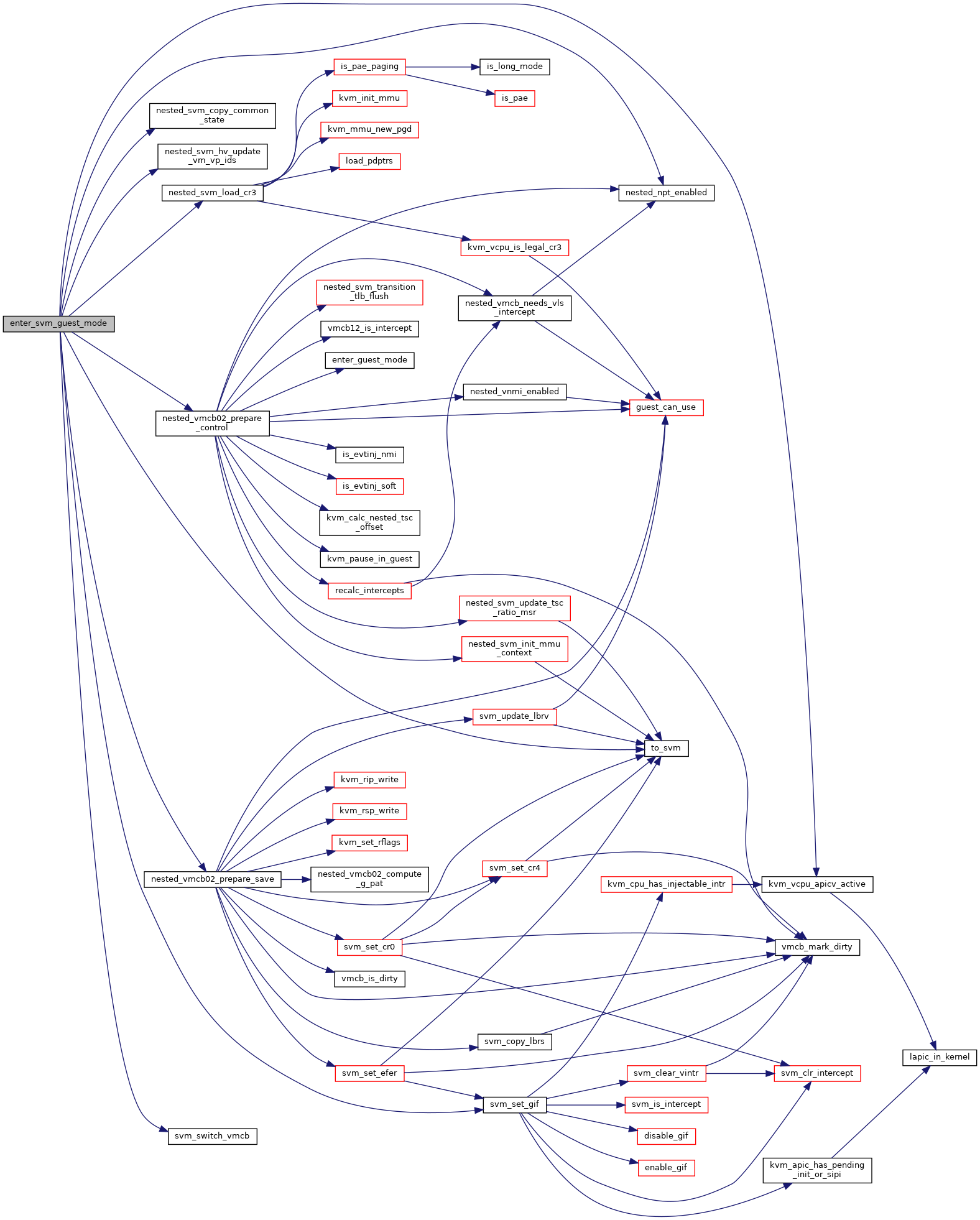

◆ get_vgif_vmcb()
|
inlinestatic |
◆ get_vnmi_vmcb_l1()
|
inlinestatic |
◆ gif_set()
|
inlinestatic |
◆ is_vnmi_enabled()
|
inlinestatic |
◆ is_x2apic_msrpm_offset()
|
inlinestatic |
◆ nested_copy_vmcb_control_to_cache()
| void nested_copy_vmcb_control_to_cache | ( | struct vcpu_svm * | svm, |
| struct vmcb_control_area * | control | ||
| ) |
Definition at line 382 of file nested.c.


◆ nested_copy_vmcb_save_to_cache()
| void nested_copy_vmcb_save_to_cache | ( | struct vcpu_svm * | svm, |
| struct vmcb_save_area * | save | ||
| ) |
Definition at line 404 of file nested.c.


◆ nested_exit_on_intr()
|
inlinestatic |
◆ nested_exit_on_nmi()
|
inlinestatic |
◆ nested_exit_on_smi()
|
inlinestatic |
◆ nested_npt_enabled()
|
inlinestatic |
◆ nested_svm_check_exception()
| int nested_svm_check_exception | ( | struct vcpu_svm * | svm, |
| unsigned | nr, | ||
| bool | has_error_code, | ||
| u32 | error_code | ||
| ) |
◆ nested_svm_check_permissions()
| int nested_svm_check_permissions | ( | struct kvm_vcpu * | vcpu | ) |
◆ nested_svm_exit_handled()
| int nested_svm_exit_handled | ( | struct vcpu_svm * | svm | ) |
◆ nested_svm_exit_special()
| int nested_svm_exit_special | ( | struct vcpu_svm * | svm | ) |
Definition at line 1496 of file nested.c.
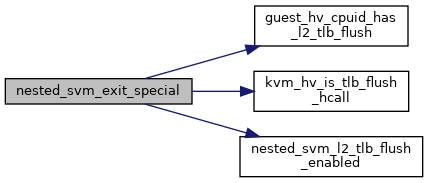

◆ nested_svm_simple_vmexit()
|
inlinestatic |
◆ nested_svm_update_tsc_ratio_msr()
| void nested_svm_update_tsc_ratio_msr | ( | struct kvm_vcpu * | vcpu | ) |
Definition at line 1532 of file nested.c.


◆ nested_svm_virtualize_tpr()
|
inlinestatic |
◆ nested_svm_vmexit()
| int nested_svm_vmexit | ( | struct vcpu_svm * | svm | ) |
Definition at line 967 of file nested.c.
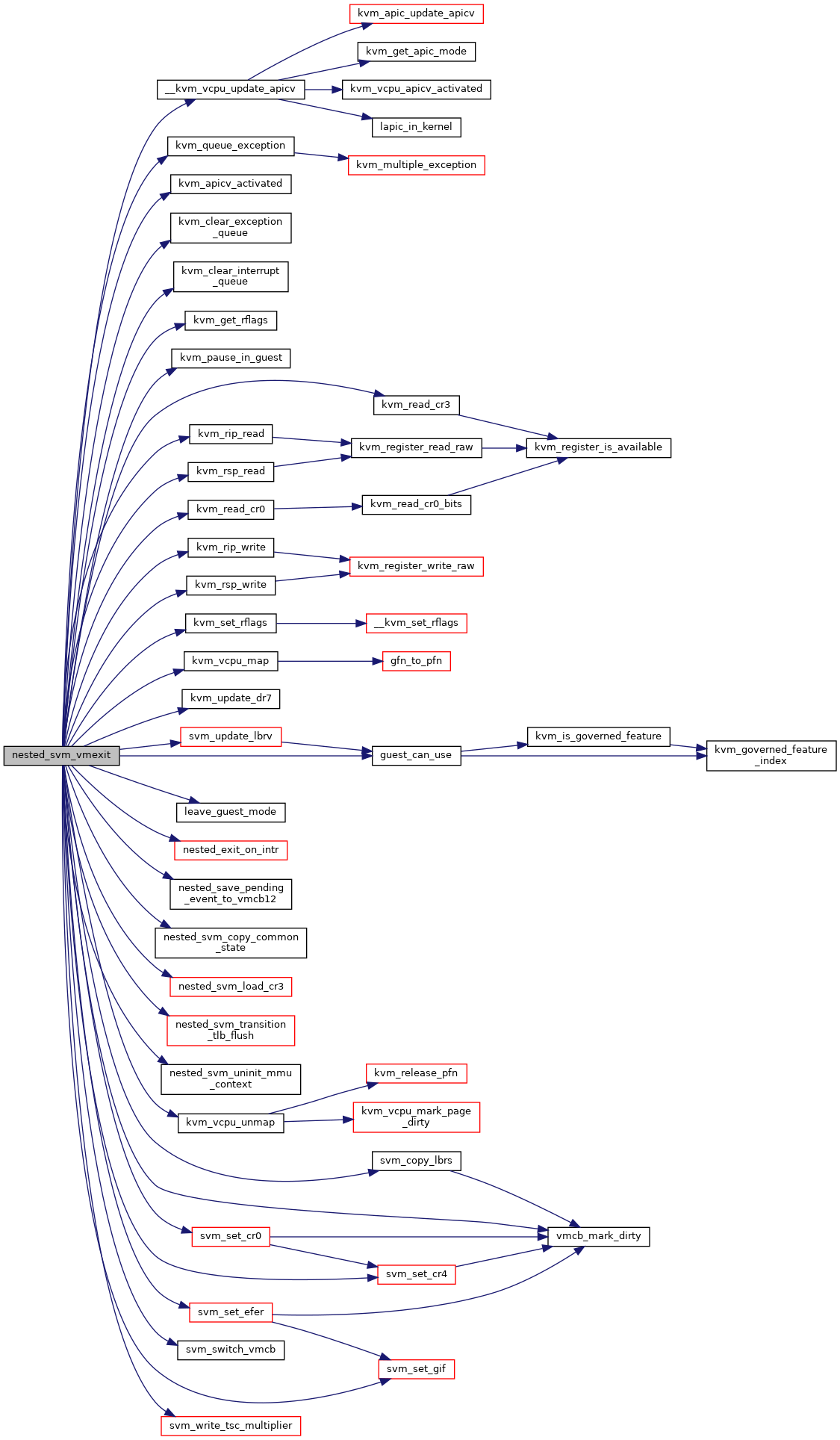

◆ nested_svm_vmrun()
| int nested_svm_vmrun | ( | struct kvm_vcpu * | vcpu | ) |
Definition at line 837 of file nested.c.
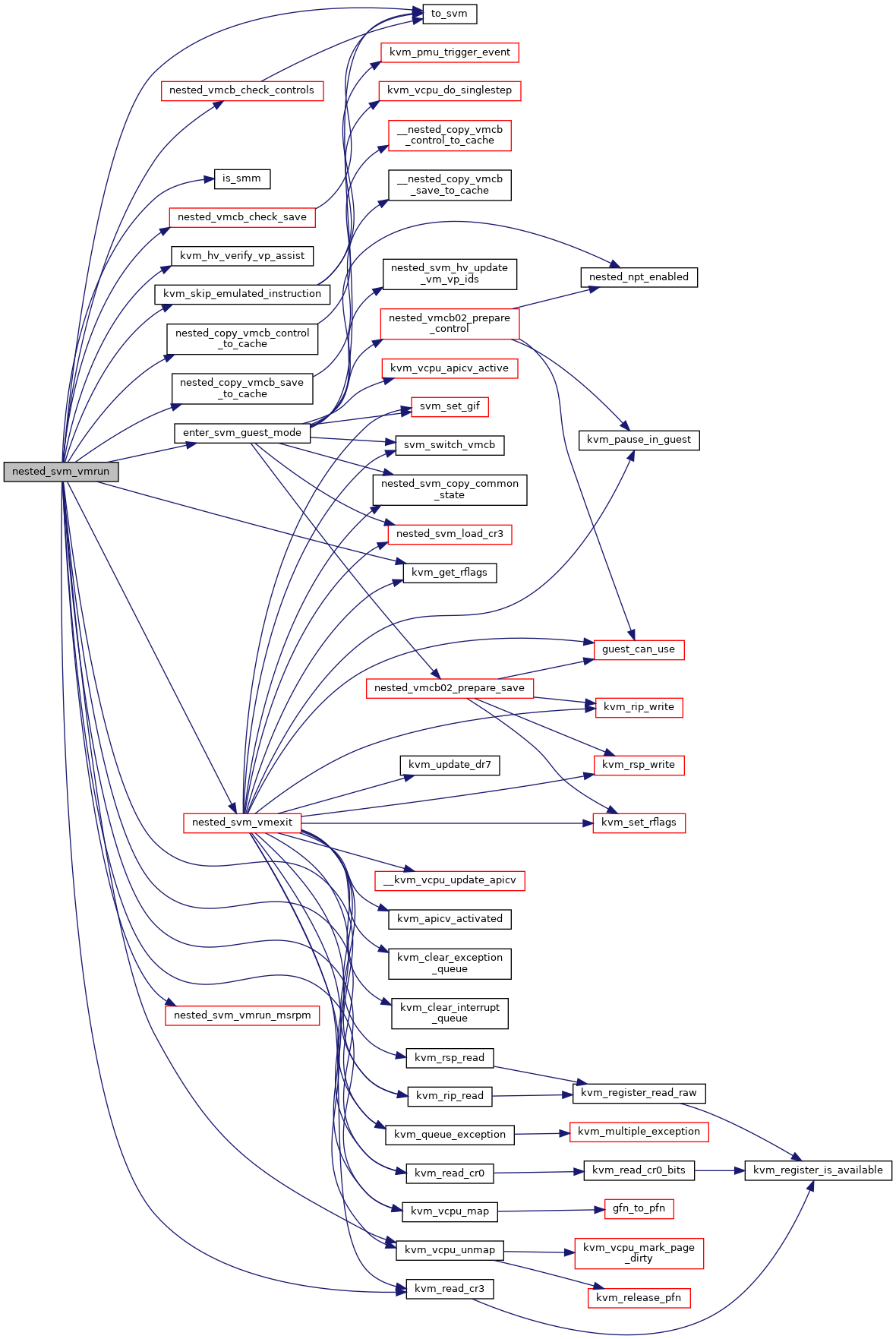

◆ nested_sync_control_from_vmcb02()
| void nested_sync_control_from_vmcb02 | ( | struct vcpu_svm * | svm | ) |
◆ nested_vgif_enabled()
|
inlinestatic |
◆ nested_vmcb02_compute_g_pat()
| void nested_vmcb02_compute_g_pat | ( | struct vcpu_svm * | svm | ) |
◆ nested_vnmi_enabled()
|
inlinestatic |
◆ pre_sev_run()
| void pre_sev_run | ( | struct vcpu_svm * | svm, |
| int | cpu | ||
| ) |
◆ recalc_intercepts()
| void recalc_intercepts | ( | struct vcpu_svm * | svm | ) |
Definition at line 122 of file nested.c.

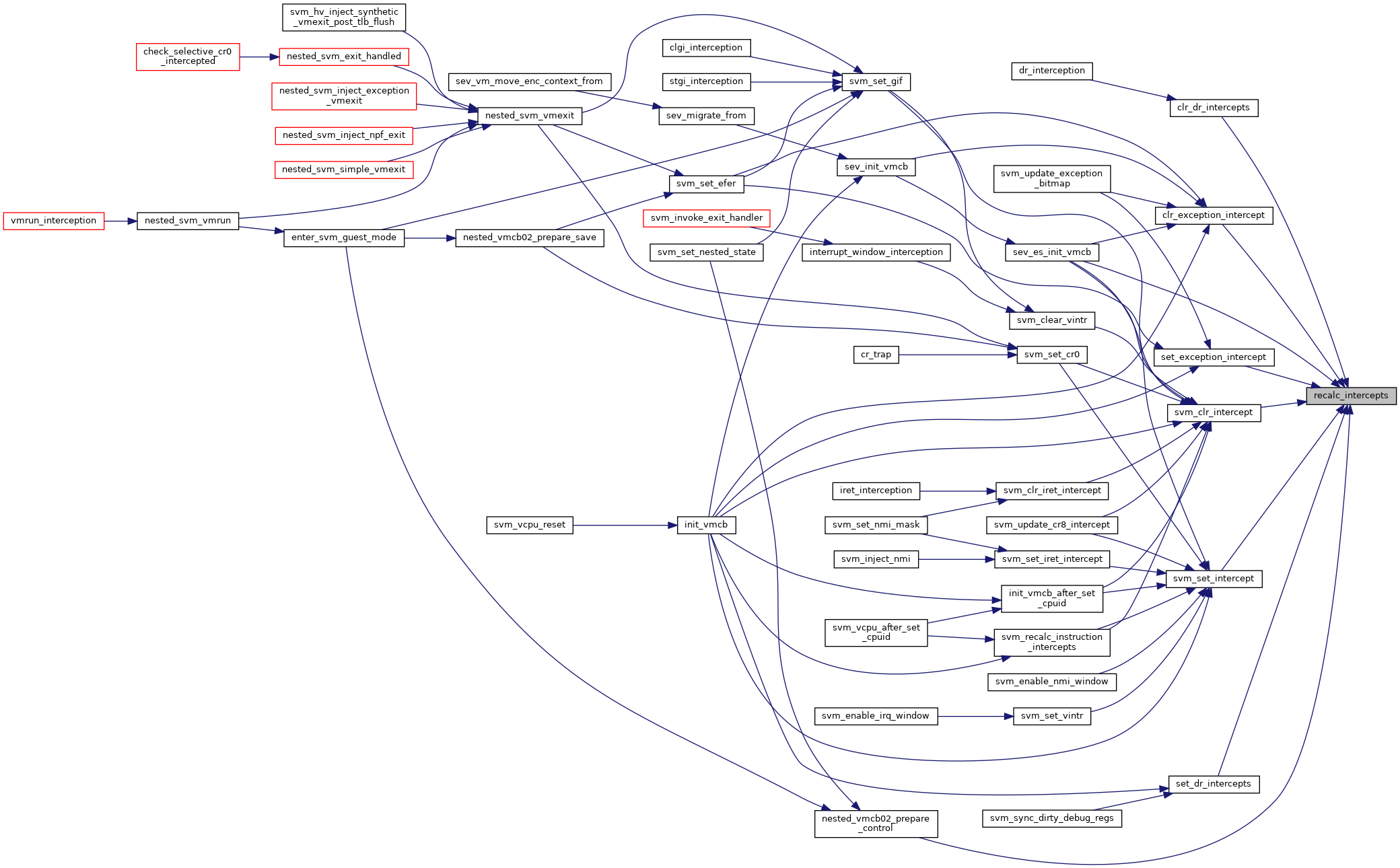
◆ set_exception_intercept()
|
inlinestatic |
◆ set_msr_interception()
| void set_msr_interception | ( | struct kvm_vcpu * | vcpu, |
| u32 * | msrpm, | ||
| u32 | msr, | ||
| int | read, | ||
| int | write | ||
| ) |
Definition at line 859 of file svm.c.


◆ sev_cpu_init()
| int sev_cpu_init | ( | struct svm_cpu_data * | sd | ) |
◆ sev_es_guest()
|
static |
◆ sev_es_prepare_switch_to_guest()
| void sev_es_prepare_switch_to_guest | ( | struct sev_es_save_area * | hostsa | ) |
◆ sev_es_string_io()
| int sev_es_string_io | ( | struct vcpu_svm * | svm, |
| int | size, | ||
| unsigned int | port, | ||
| int | in | ||
| ) |
Definition at line 2963 of file sev.c.


◆ sev_es_unmap_ghcb()
| void sev_es_unmap_ghcb | ( | struct vcpu_svm * | svm | ) |
Definition at line 2614 of file sev.c.


◆ sev_es_vcpu_reset()
| void sev_es_vcpu_reset | ( | struct vcpu_svm * | svm | ) |
◆ sev_free_vcpu()
| void sev_free_vcpu | ( | struct kvm_vcpu * | vcpu | ) |
Definition at line 2373 of file sev.c.


◆ sev_guest()
|
static |
◆ sev_guest_memory_reclaimed()
| void sev_guest_memory_reclaimed | ( | struct kvm * | kvm | ) |
◆ sev_handle_vmgexit()
| int sev_handle_vmgexit | ( | struct kvm_vcpu * | vcpu | ) |
Definition at line 2857 of file sev.c.
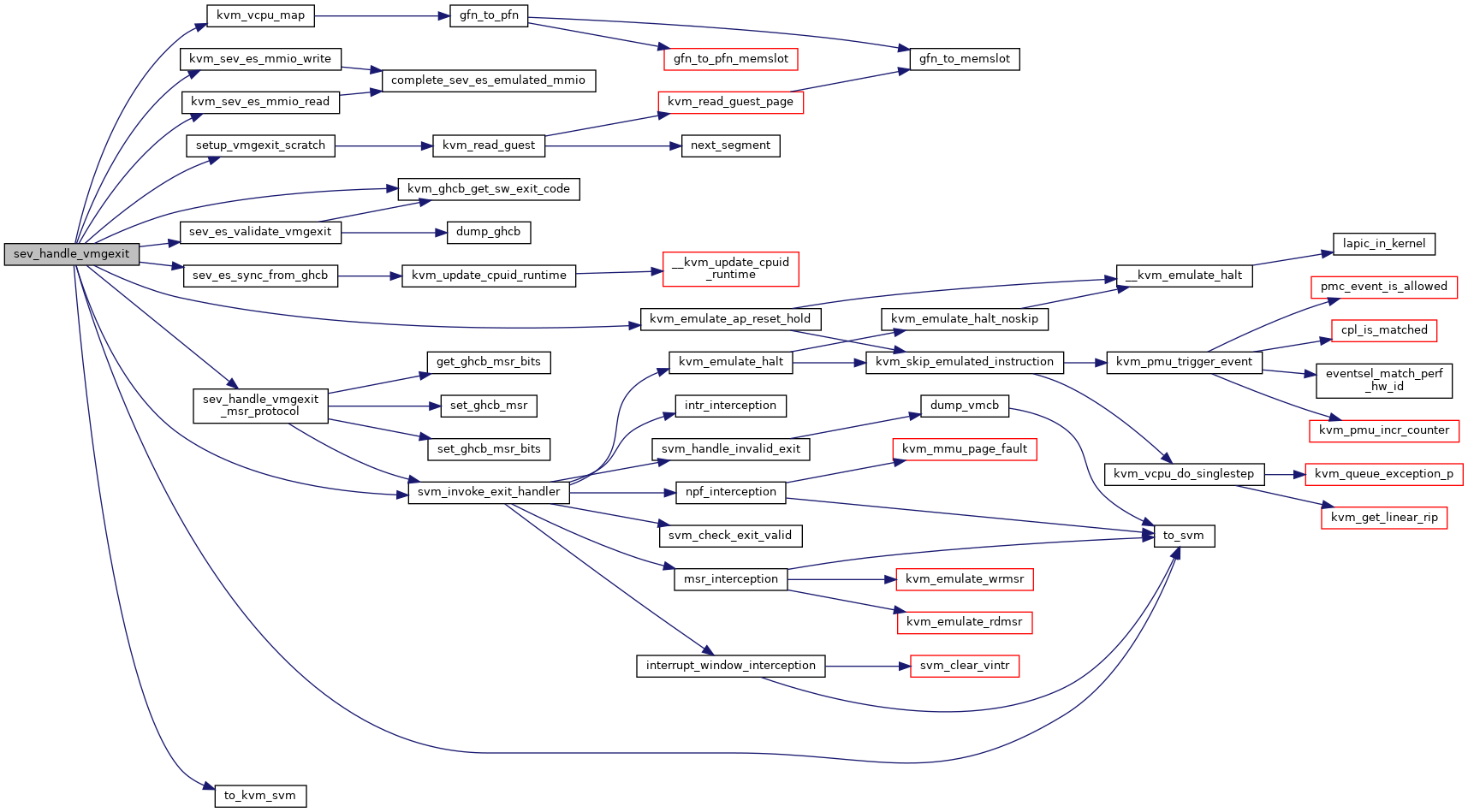
◆ sev_hardware_setup()
| void __init sev_hardware_setup | ( | void | ) |
◆ sev_hardware_unsetup()
| void sev_hardware_unsetup | ( | void | ) |
◆ sev_init_vmcb()
| void sev_init_vmcb | ( | struct vcpu_svm * | svm | ) |
◆ sev_mem_enc_ioctl()
| int sev_mem_enc_ioctl | ( | struct kvm * | kvm, |
| void __user * | argp | ||
| ) |
Definition at line 1862 of file sev.c.
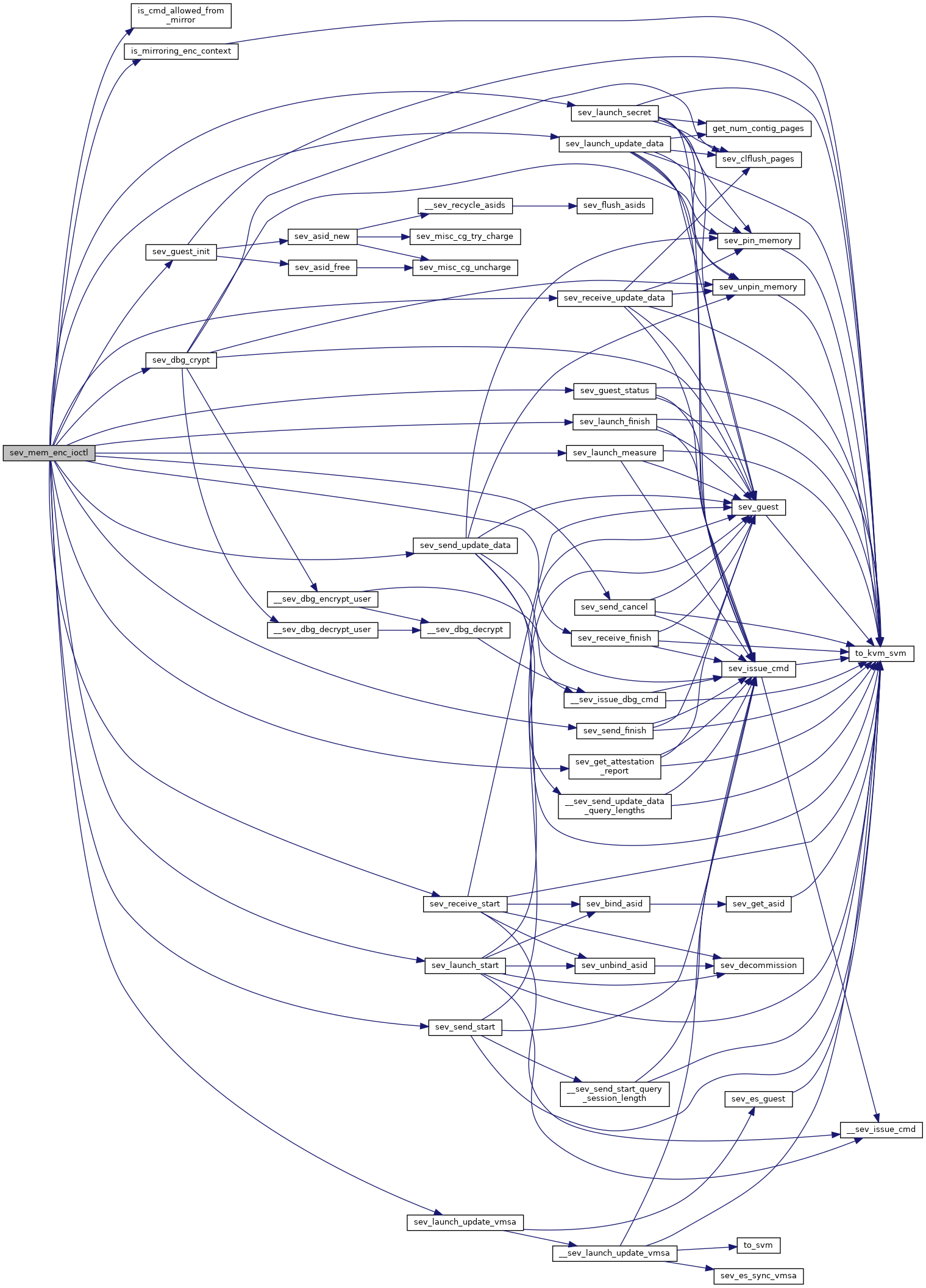
◆ sev_mem_enc_register_region()
| int sev_mem_enc_register_region | ( | struct kvm * | kvm, |
| struct kvm_enc_region * | range | ||
| ) |
Definition at line 1959 of file sev.c.
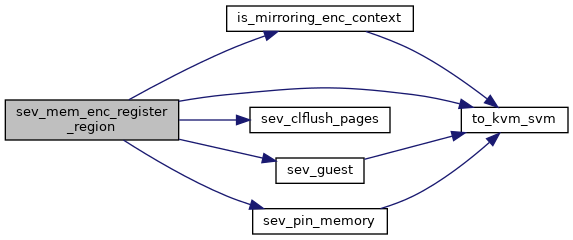
◆ sev_mem_enc_unregister_region()
| int sev_mem_enc_unregister_region | ( | struct kvm * | kvm, |
| struct kvm_enc_region * | range | ||
| ) |
Definition at line 2035 of file sev.c.

◆ sev_set_cpu_caps()
| void __init sev_set_cpu_caps | ( | void | ) |
Definition at line 2185 of file sev.c.


◆ sev_vcpu_after_set_cpuid()
| void sev_vcpu_after_set_cpuid | ( | struct vcpu_svm * | svm | ) |
Definition at line 3015 of file sev.c.
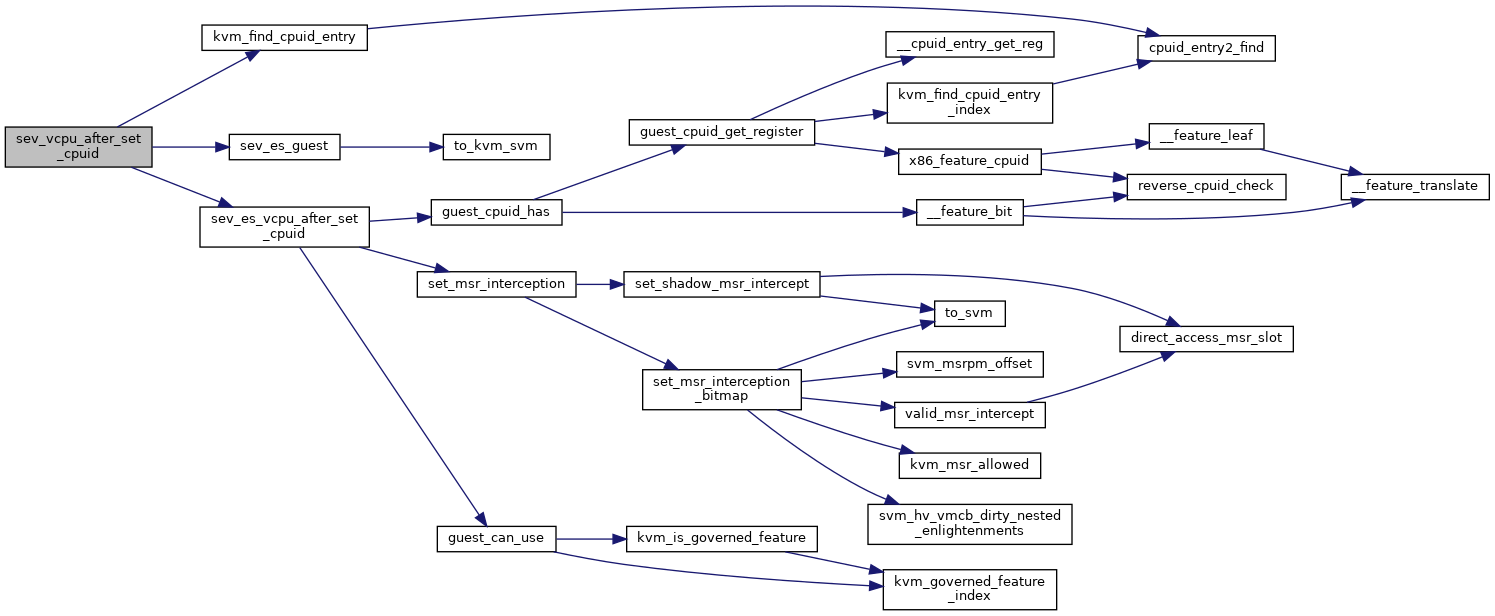

◆ sev_vcpu_deliver_sipi_vector()
| void sev_vcpu_deliver_sipi_vector | ( | struct kvm_vcpu * | vcpu, |
| u8 | vector | ||
| ) |
◆ sev_vm_copy_enc_context_from()
| int sev_vm_copy_enc_context_from | ( | struct kvm * | kvm, |
| unsigned int | source_fd | ||
| ) |
Definition at line 2075 of file sev.c.
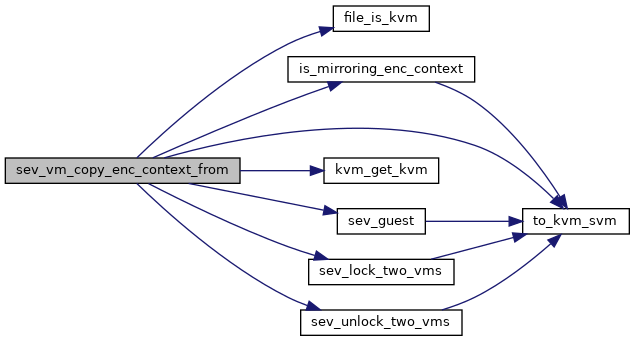
◆ sev_vm_destroy()
| void sev_vm_destroy | ( | struct kvm * | kvm | ) |
◆ sev_vm_move_enc_context_from()
| int sev_vm_move_enc_context_from | ( | struct kvm * | kvm, |
| unsigned int | source_fd | ||
| ) |
Definition at line 1791 of file sev.c.
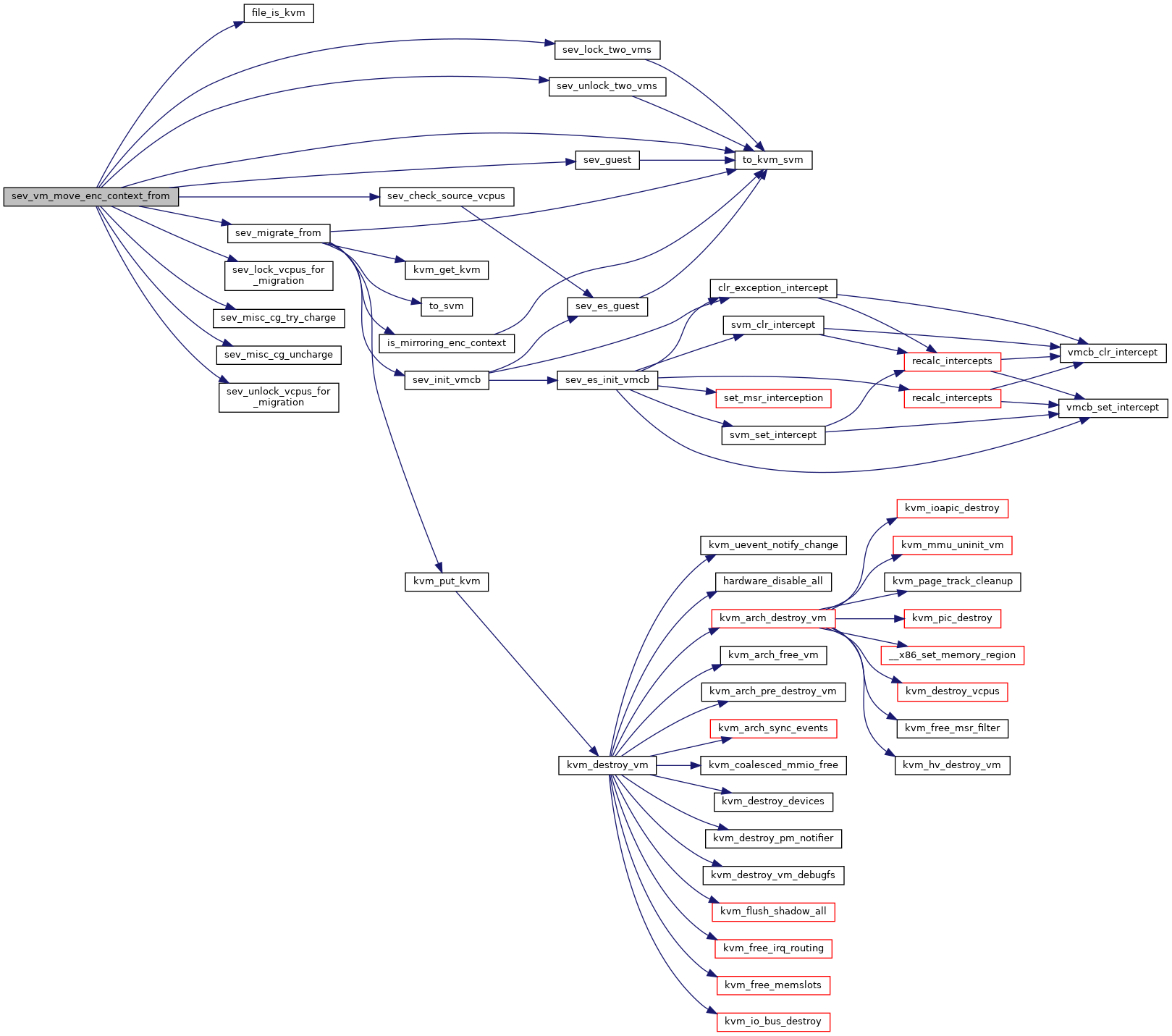
◆ svm_allocate_nested()
| int svm_allocate_nested | ( | struct vcpu_svm * | svm | ) |
◆ svm_clr_intercept()
|
inlinestatic |
◆ svm_complete_interrupt_delivery()
| void svm_complete_interrupt_delivery | ( | struct kvm_vcpu * | vcpu, |
| int | delivery_mode, | ||
| int | trig_mode, | ||
| int | vec | ||
| ) |
◆ svm_copy_lbrs()
| void svm_copy_lbrs | ( | struct vmcb * | to_vmcb, |
| struct vmcb * | from_vmcb | ||
| ) |
◆ svm_copy_vmloadsave_state()
| void svm_copy_vmloadsave_state | ( | struct vmcb * | to_vmcb, |
| struct vmcb * | from_vmcb | ||
| ) |
◆ svm_copy_vmrun_state()
| void svm_copy_vmrun_state | ( | struct vmcb_save_area * | to_save, |
| struct vmcb_save_area * | from_save | ||
| ) |
◆ svm_free_nested()
| void svm_free_nested | ( | struct vcpu_svm * | svm | ) |
◆ svm_interrupt_blocked()
| bool svm_interrupt_blocked | ( | struct kvm_vcpu * | vcpu | ) |
◆ svm_invoke_exit_handler()
| int svm_invoke_exit_handler | ( | struct kvm_vcpu * | vcpu, |
| u64 | exit_code | ||
| ) |
Definition at line 3453 of file svm.c.
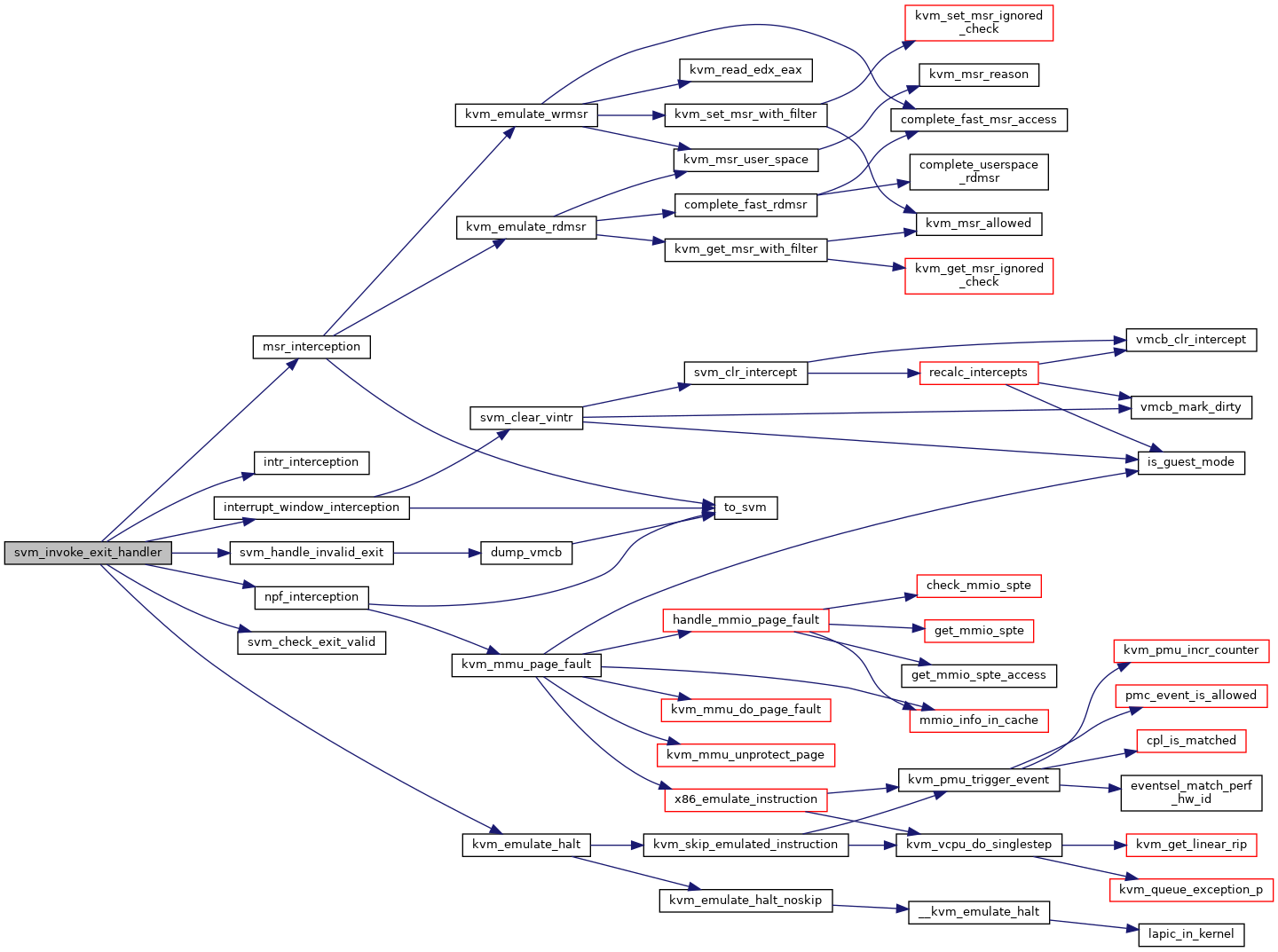

◆ svm_is_intercept()
|
inlinestatic |
◆ svm_leave_nested()
| void svm_leave_nested | ( | struct kvm_vcpu * | vcpu | ) |
◆ svm_msrpm_offset()
| u32 svm_msrpm_offset | ( | u32 | msr | ) |
◆ svm_nmi_blocked()
| bool svm_nmi_blocked | ( | struct kvm_vcpu * | vcpu | ) |
◆ svm_set_cr0()
| void svm_set_cr0 | ( | struct kvm_vcpu * | vcpu, |
| unsigned long | cr0 | ||
| ) |
◆ svm_set_cr4()
| void svm_set_cr4 | ( | struct kvm_vcpu * | vcpu, |
| unsigned long | cr4 | ||
| ) |
◆ svm_set_efer()
| int svm_set_efer | ( | struct kvm_vcpu * | vcpu, |
| u64 | efer | ||
| ) |
◆ svm_set_gif()
| void svm_set_gif | ( | struct vcpu_svm * | svm, |
| bool | value | ||
| ) |
Definition at line 2406 of file svm.c.
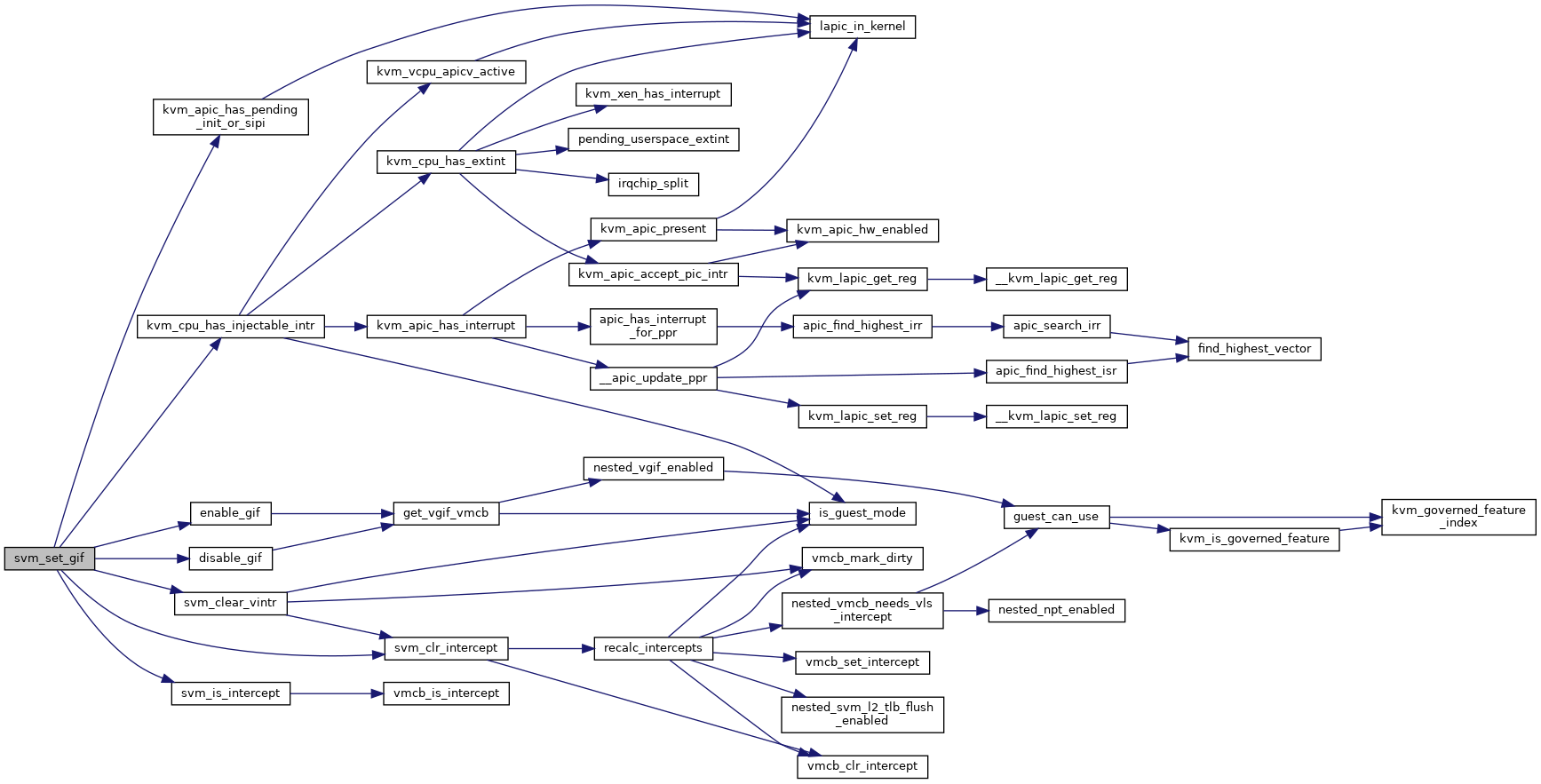

◆ svm_set_intercept()
|
inlinestatic |
◆ svm_set_x2apic_msr_interception()
| void svm_set_x2apic_msr_interception | ( | struct vcpu_svm * | svm, |
| bool | disable | ||
| ) |
Definition at line 892 of file svm.c.


◆ svm_smi_blocked()
| bool svm_smi_blocked | ( | struct kvm_vcpu * | vcpu | ) |

◆ svm_switch_vmcb()
| void svm_switch_vmcb | ( | struct vcpu_svm * | svm, |
| struct kvm_vmcb_info * | target_vmcb | ||
| ) |
◆ svm_update_lbrv()
| void svm_update_lbrv | ( | struct kvm_vcpu * | vcpu | ) |
◆ svm_vcpu_alloc_msrpm()
| u32* svm_vcpu_alloc_msrpm | ( | void | ) |
◆ svm_vcpu_free_msrpm()
| void svm_vcpu_free_msrpm | ( | u32 * | msrpm | ) |
◆ svm_vcpu_init_msrpm()
| void svm_vcpu_init_msrpm | ( | struct kvm_vcpu * | vcpu, |
| u32 * | msrpm | ||
| ) |
◆ svm_write_tsc_multiplier()
| void svm_write_tsc_multiplier | ( | struct kvm_vcpu * | vcpu | ) |
◆ to_kvm_svm()
|
static |
◆ to_svm()
|
static |
◆ vmcb12_is_intercept()
|
inlinestatic |
◆ vmcb_clr_intercept()
|
inlinestatic |
◆ vmcb_is_dirty()
|
inlinestatic |
◆ vmcb_is_intercept()
|
inlinestatic |
◆ vmcb_mark_all_clean()
|
inlinestatic |
◆ vmcb_mark_all_dirty()
|
inlinestatic |
◆ vmcb_mark_dirty()
|
inlinestatic |
◆ vmcb_set_intercept()
|
inlinestatic |
Variable Documentation
◆ __read_mostly
|
extern |








